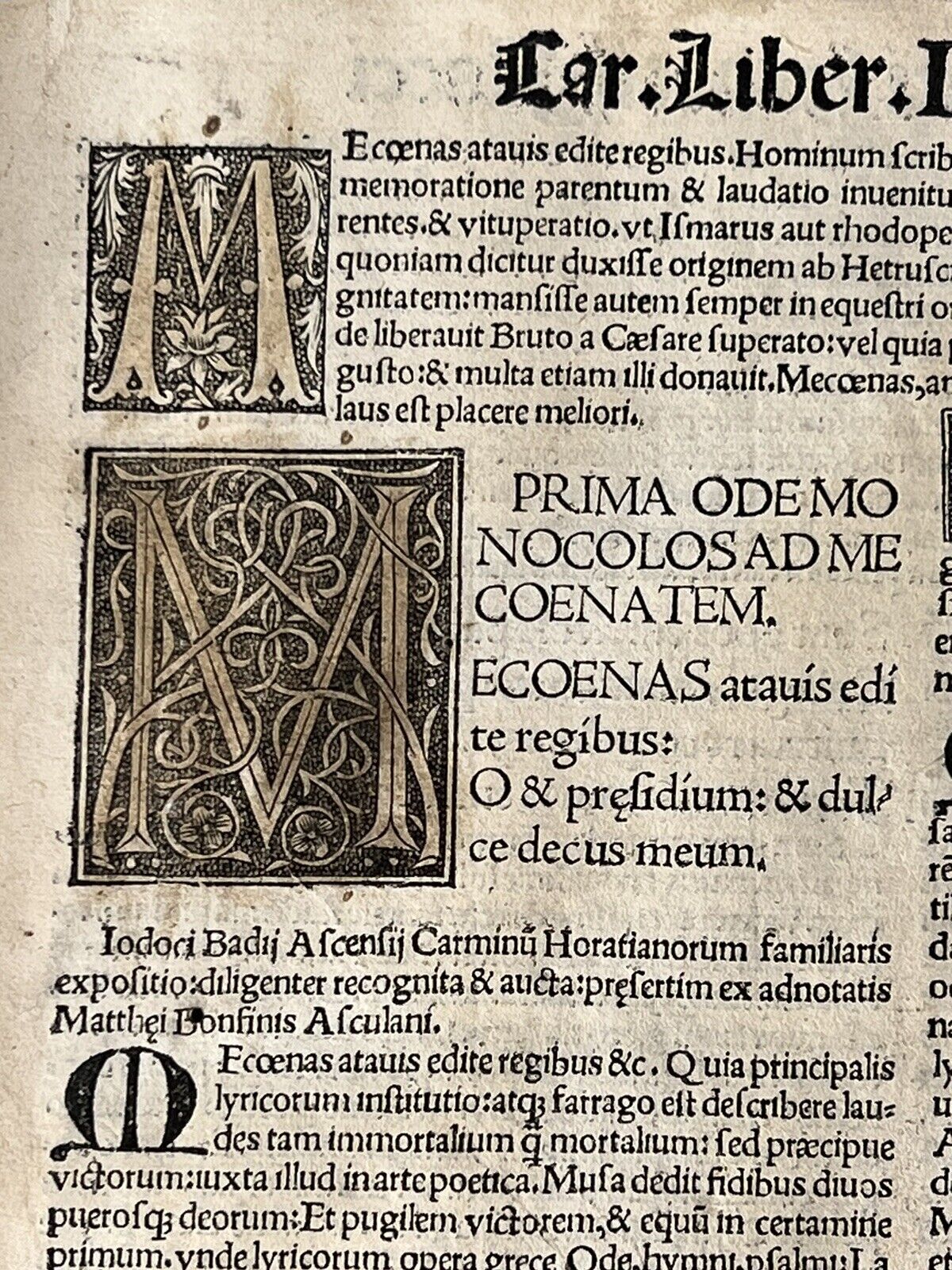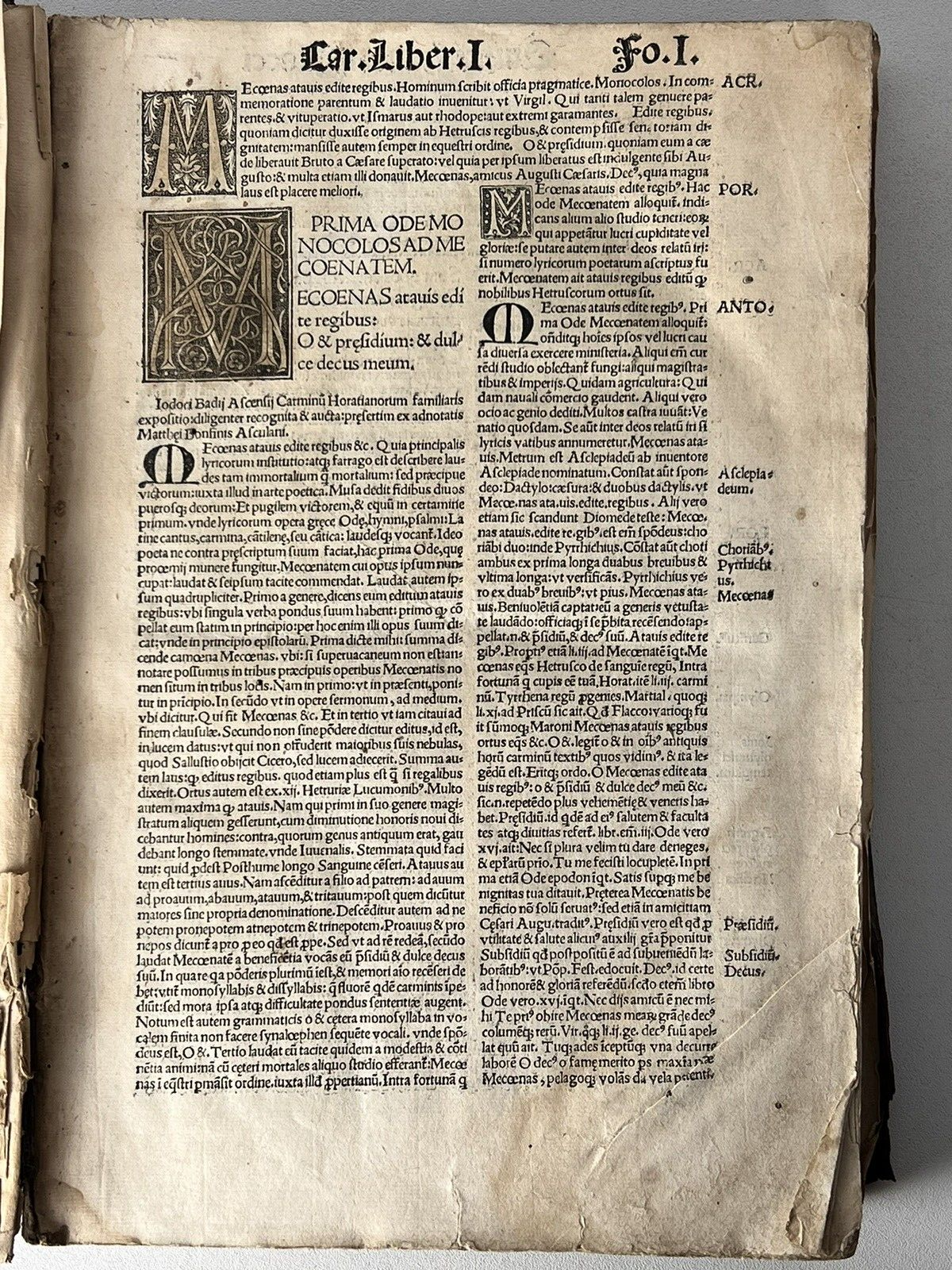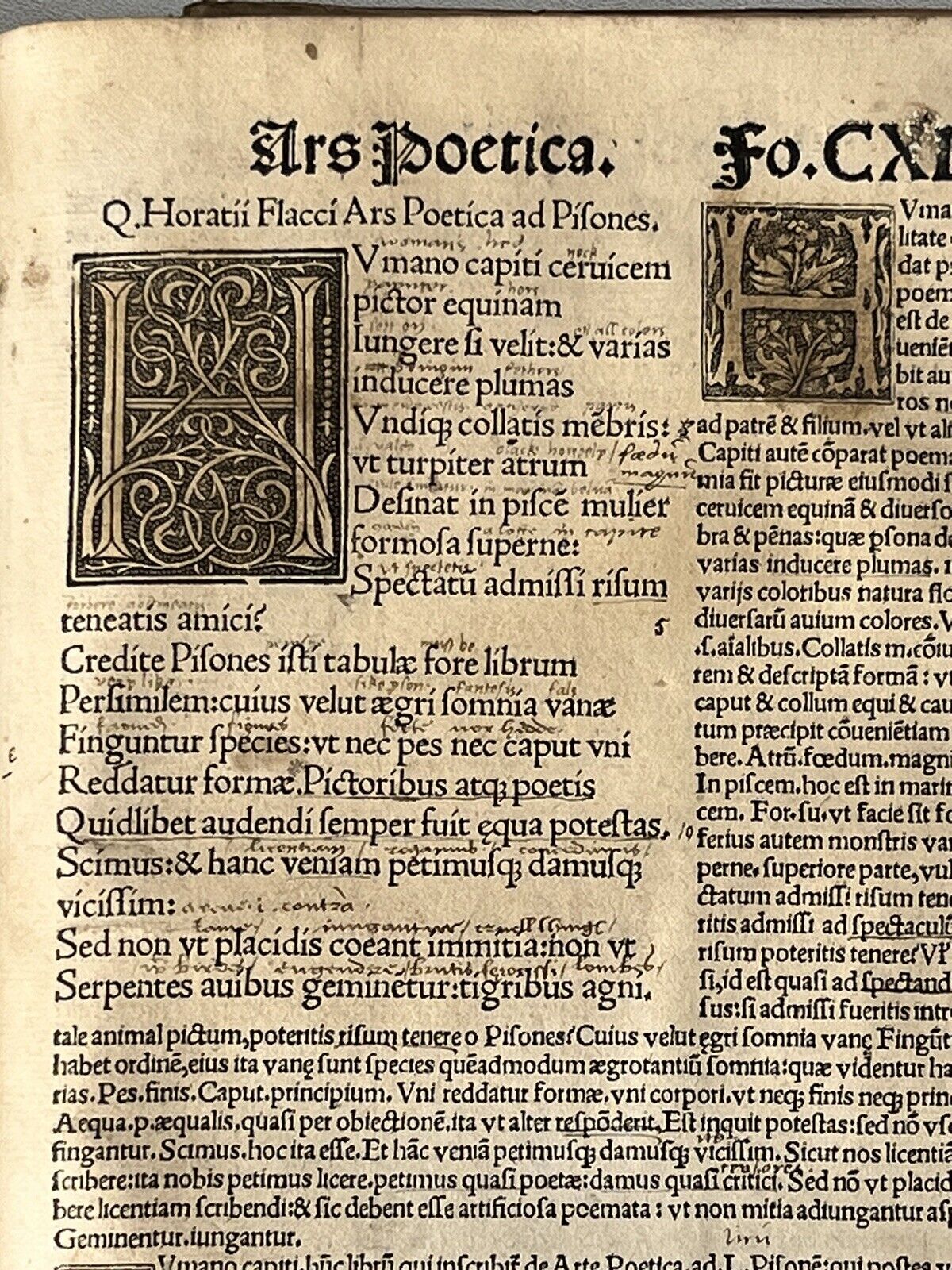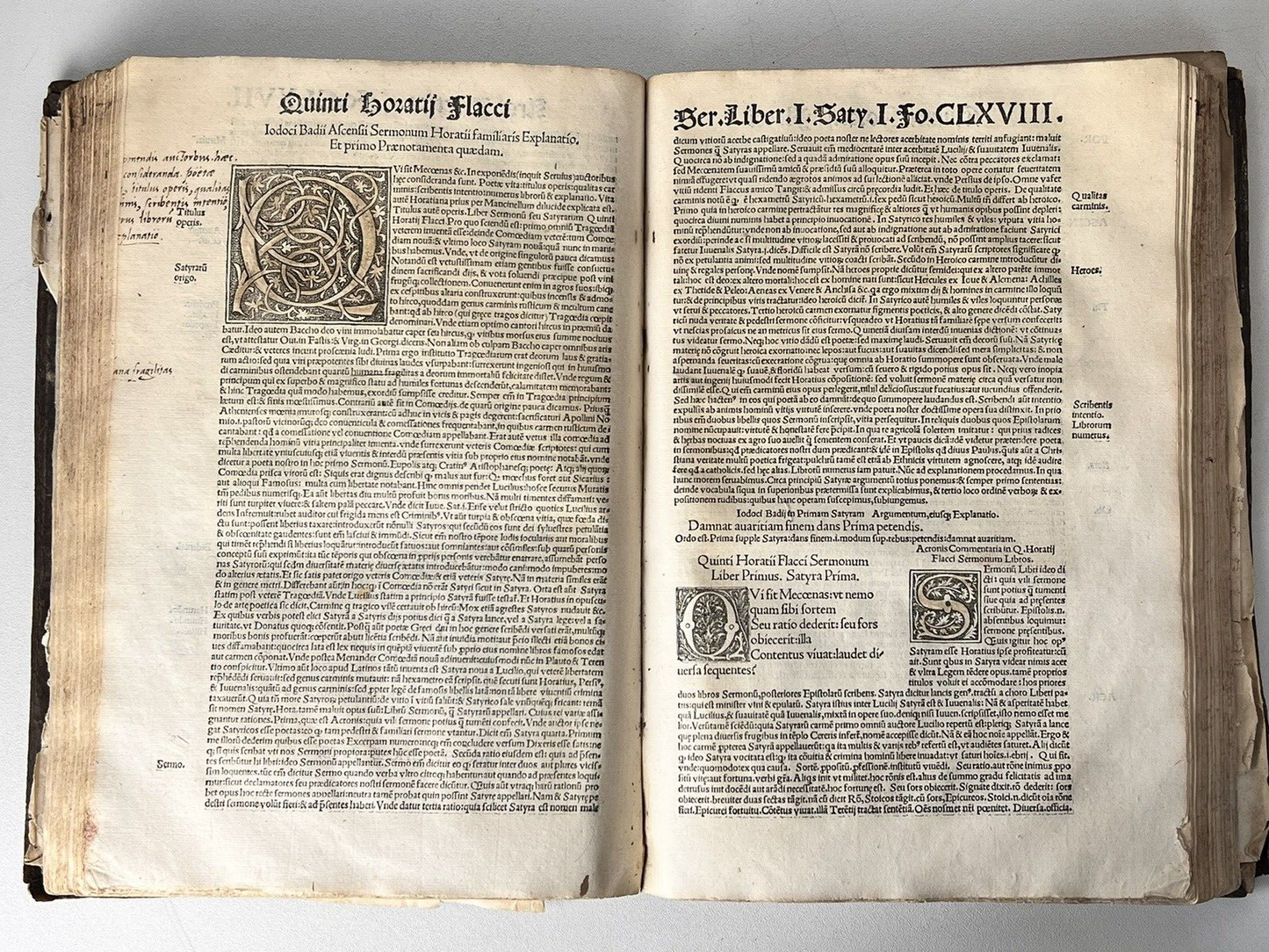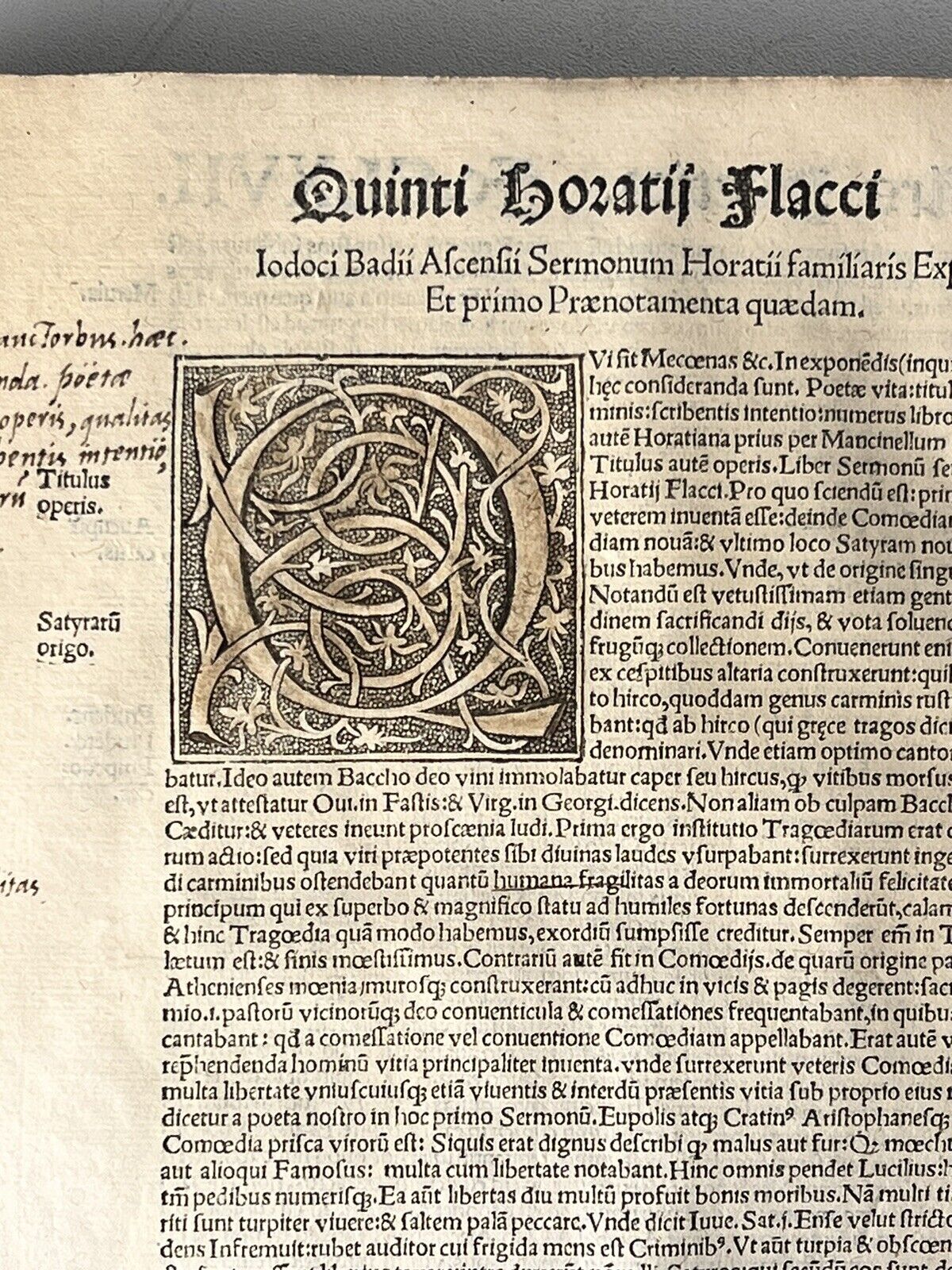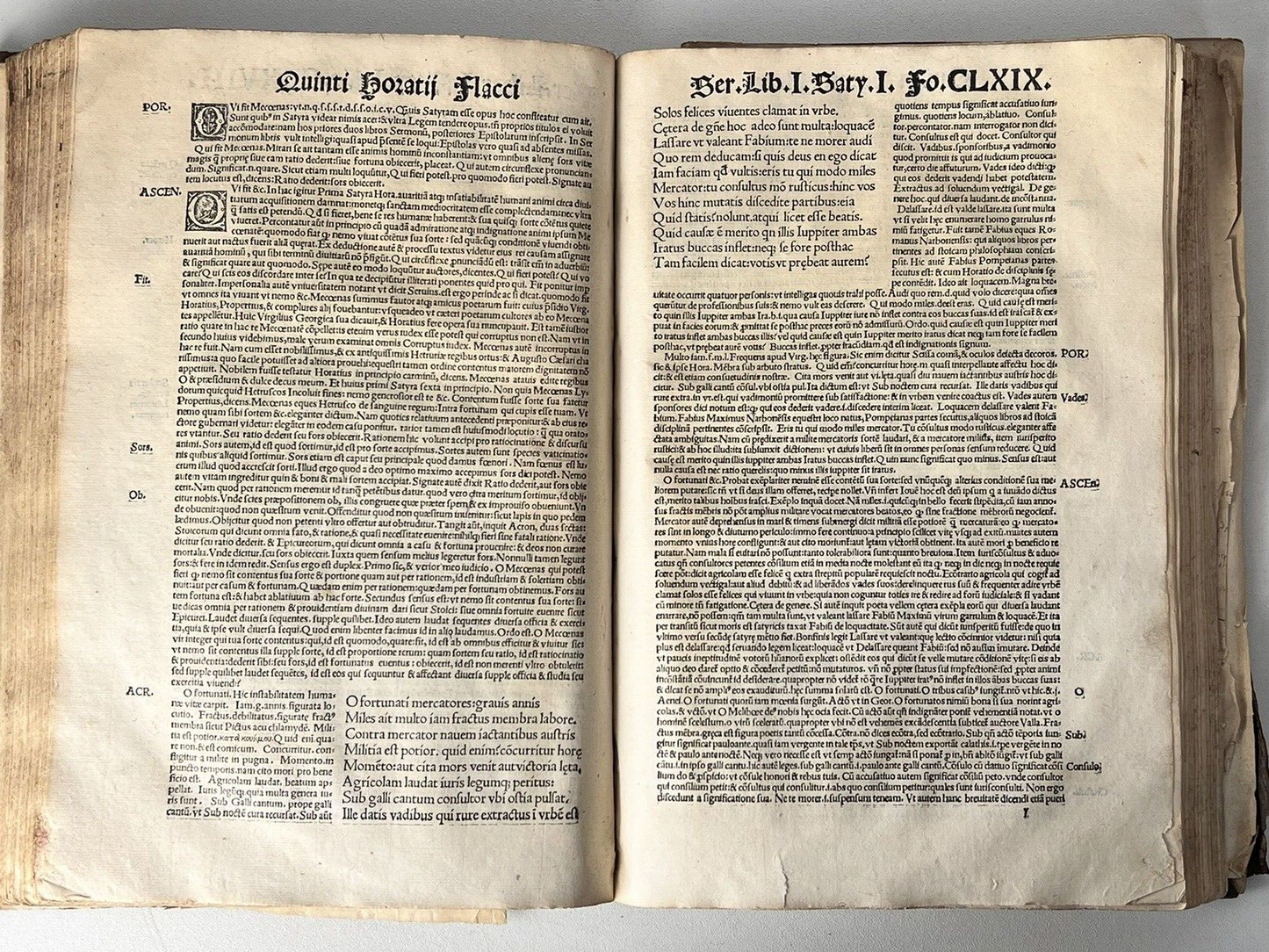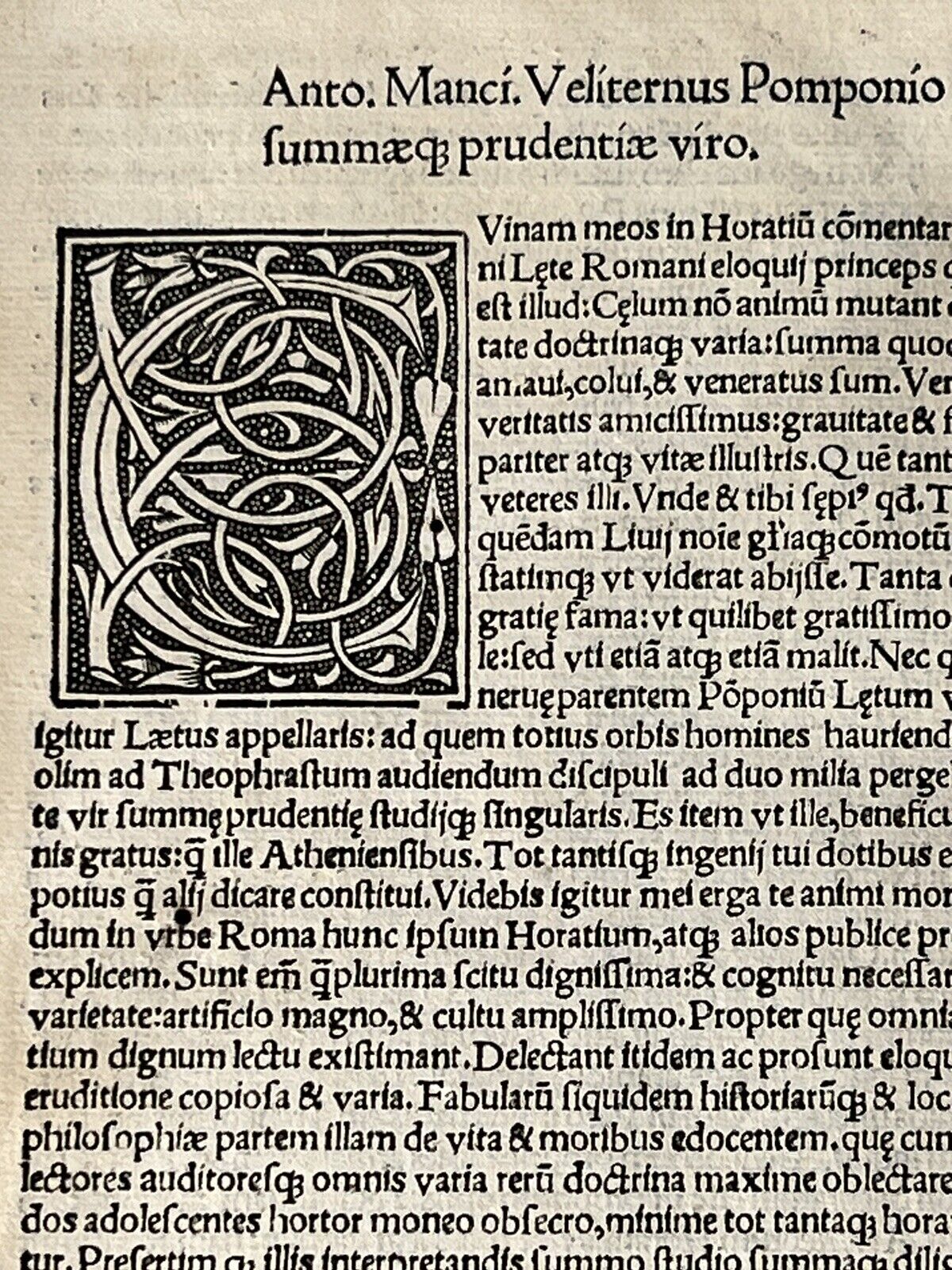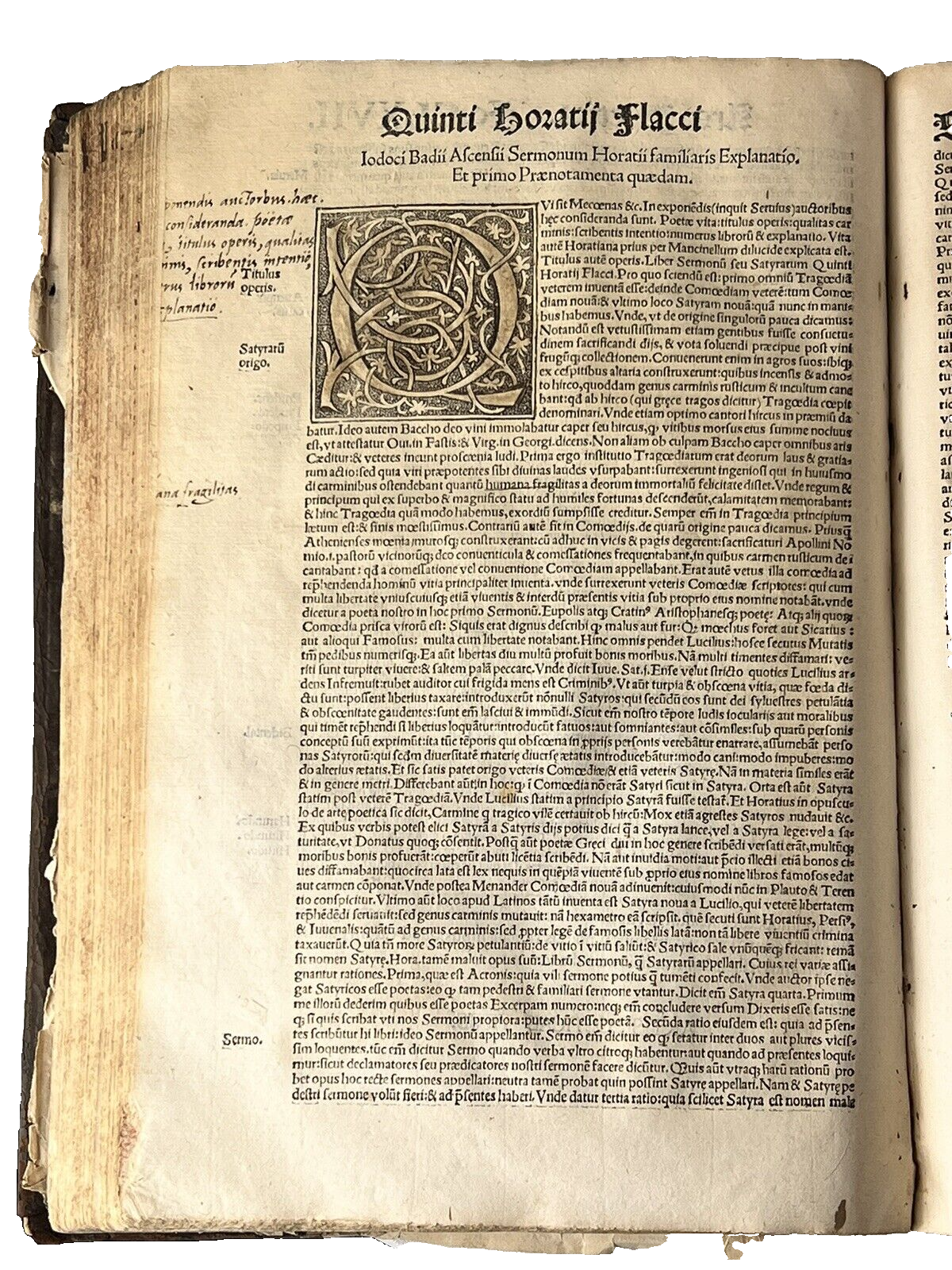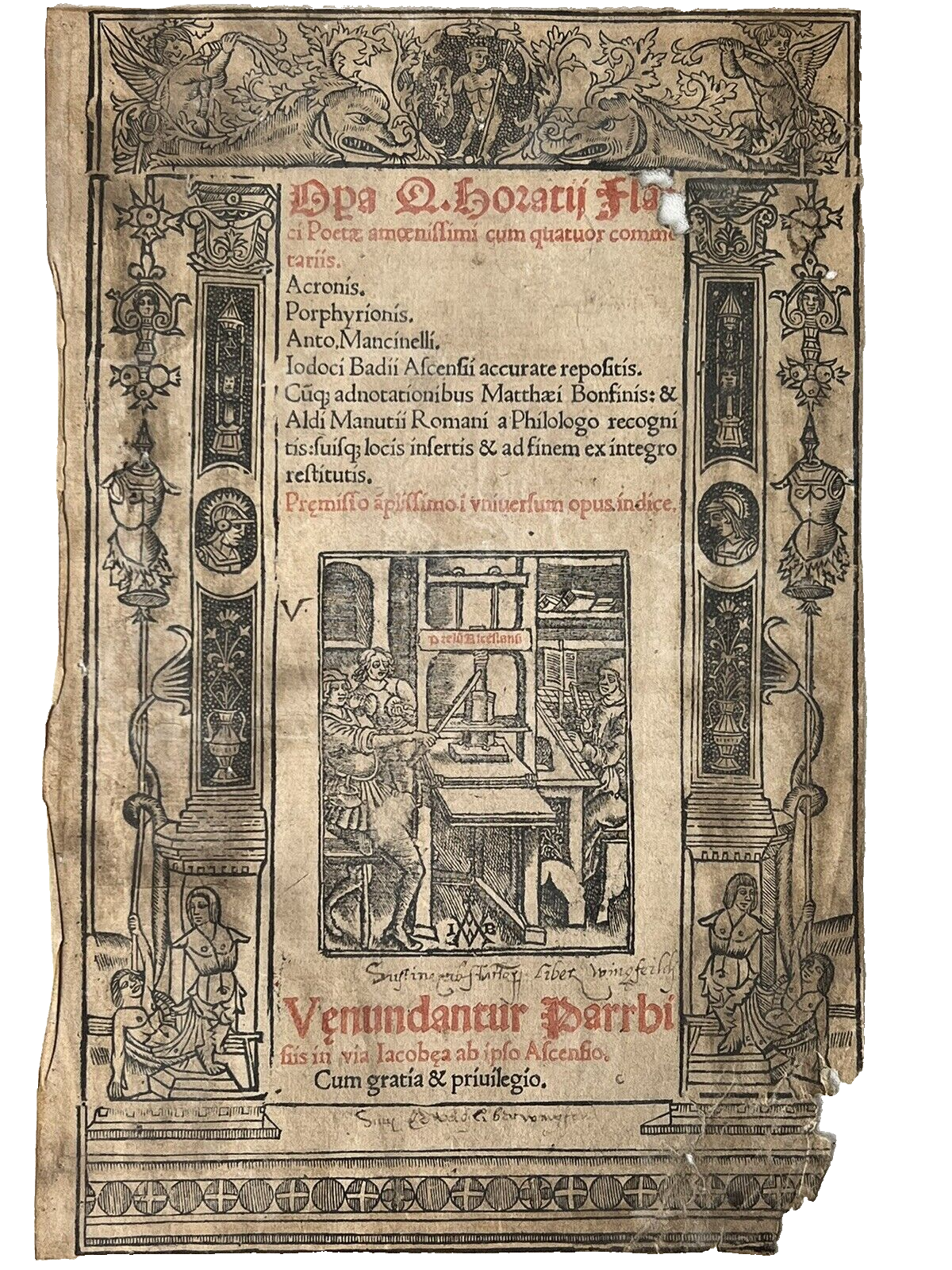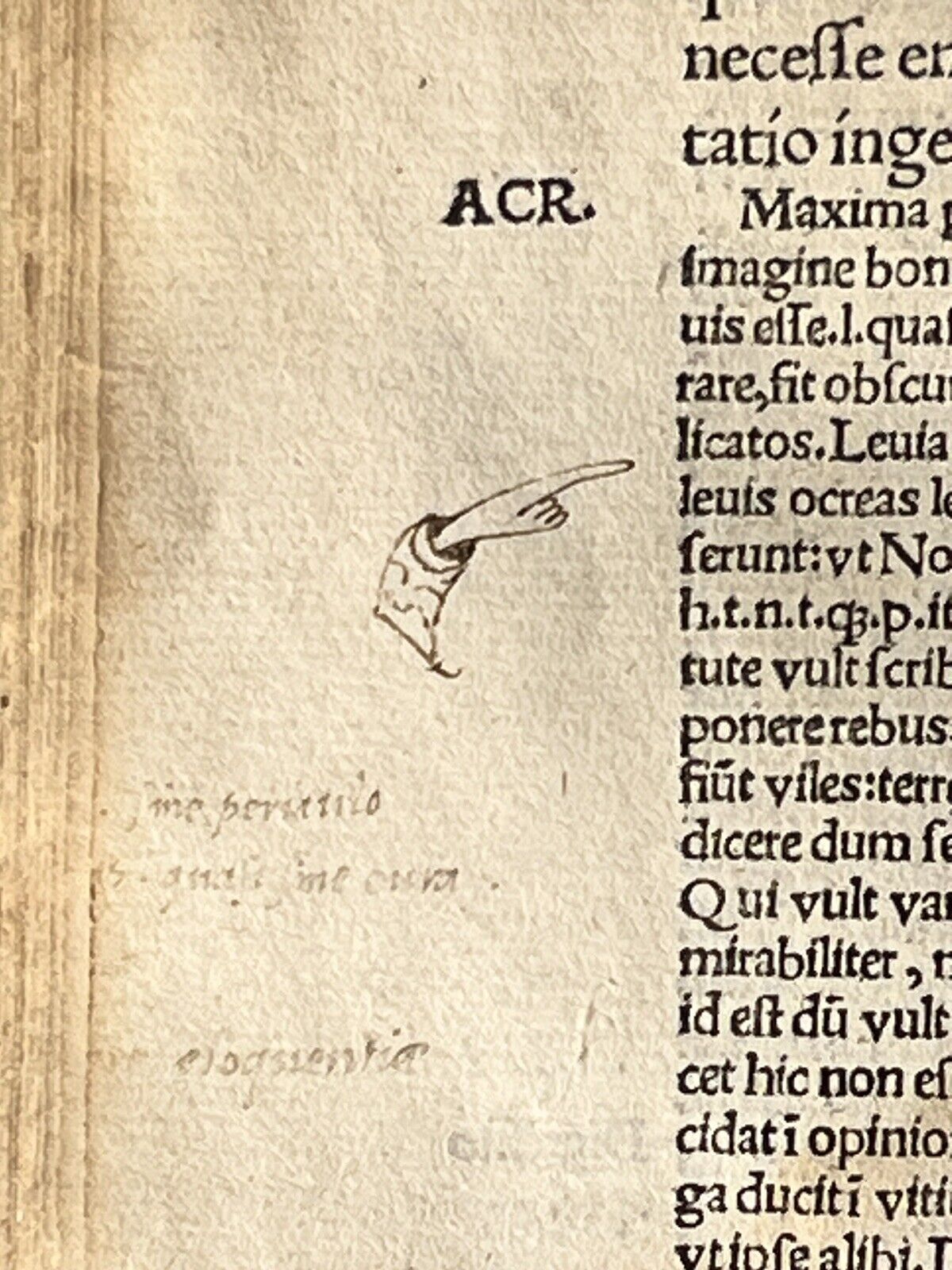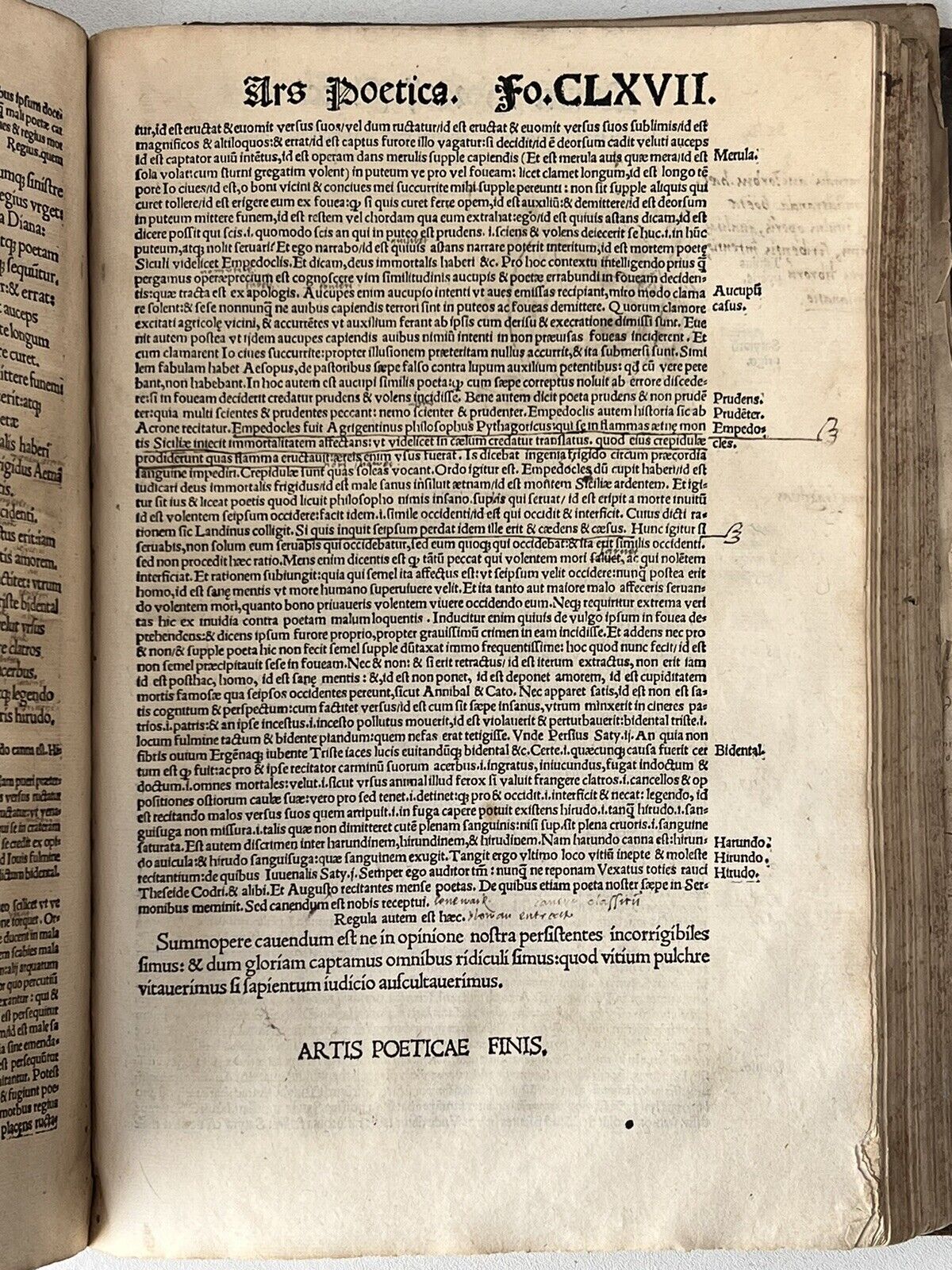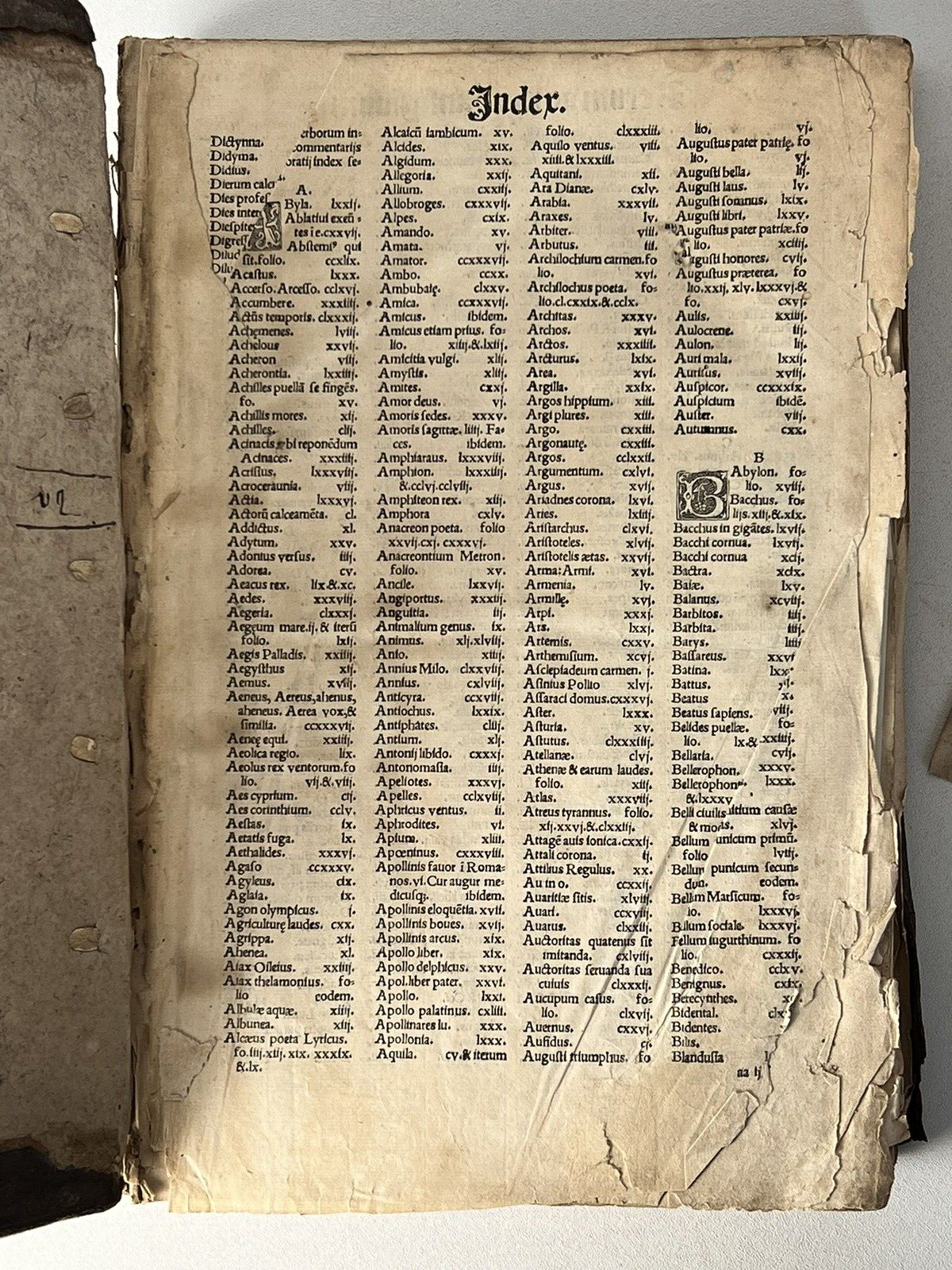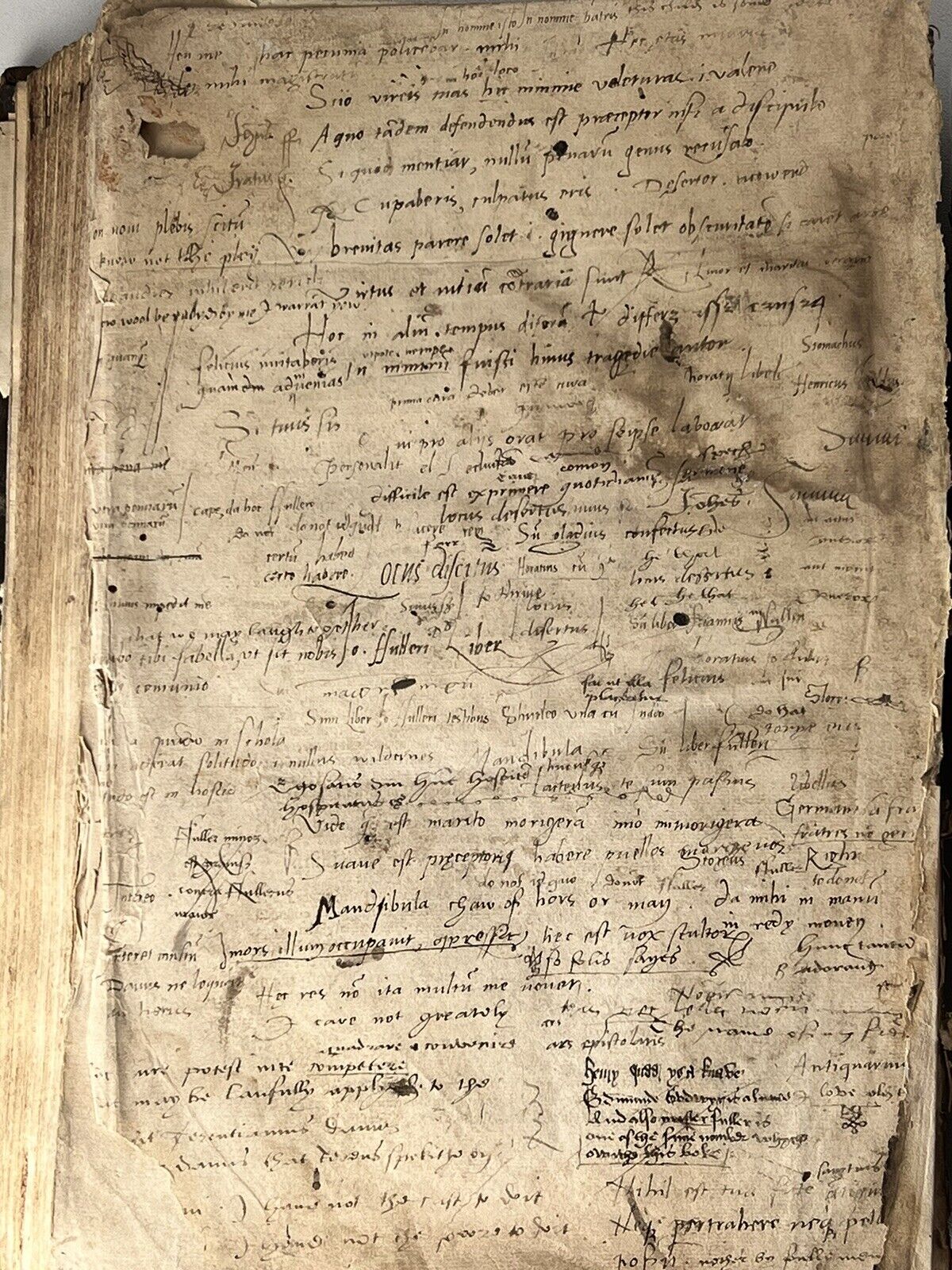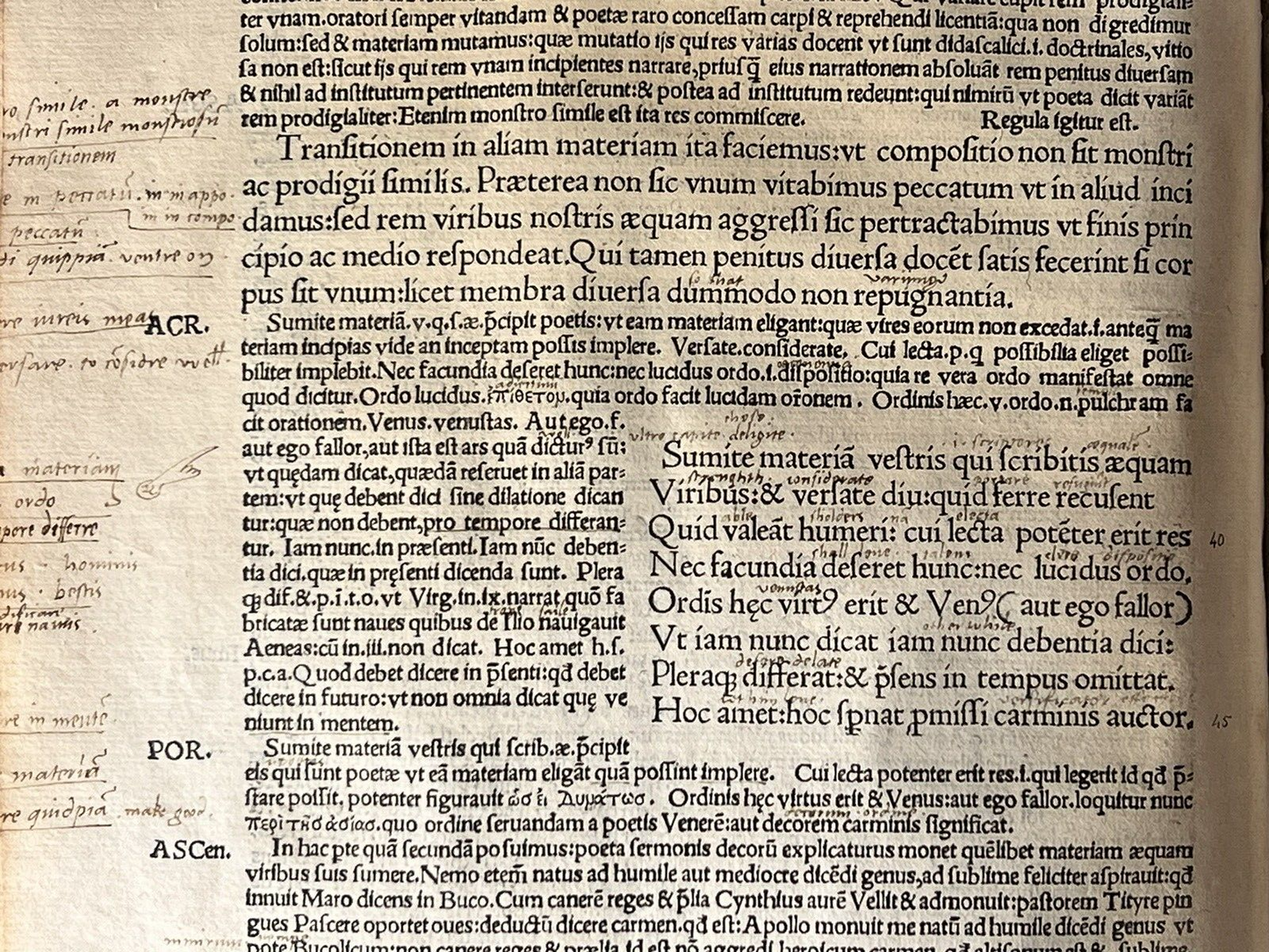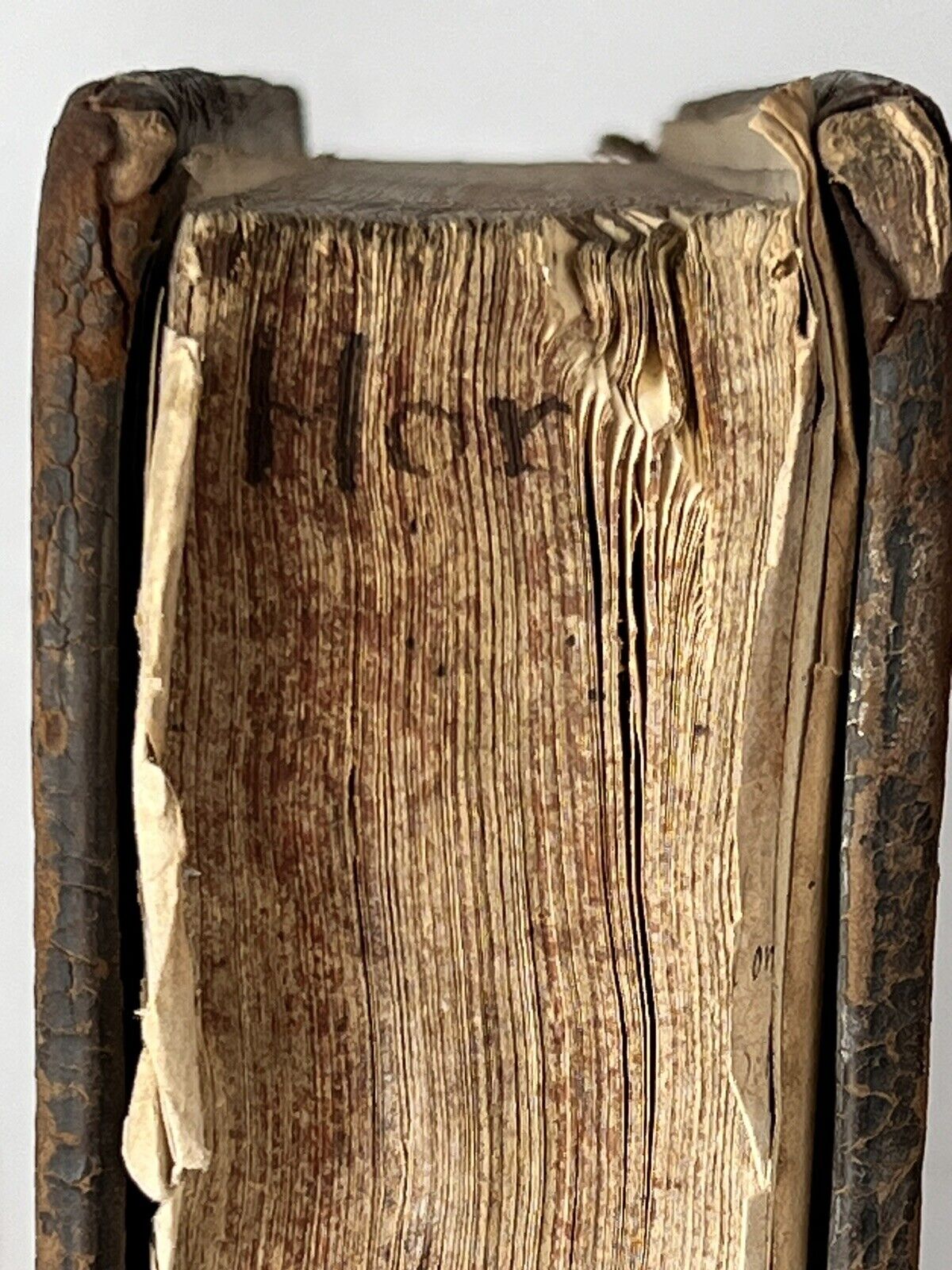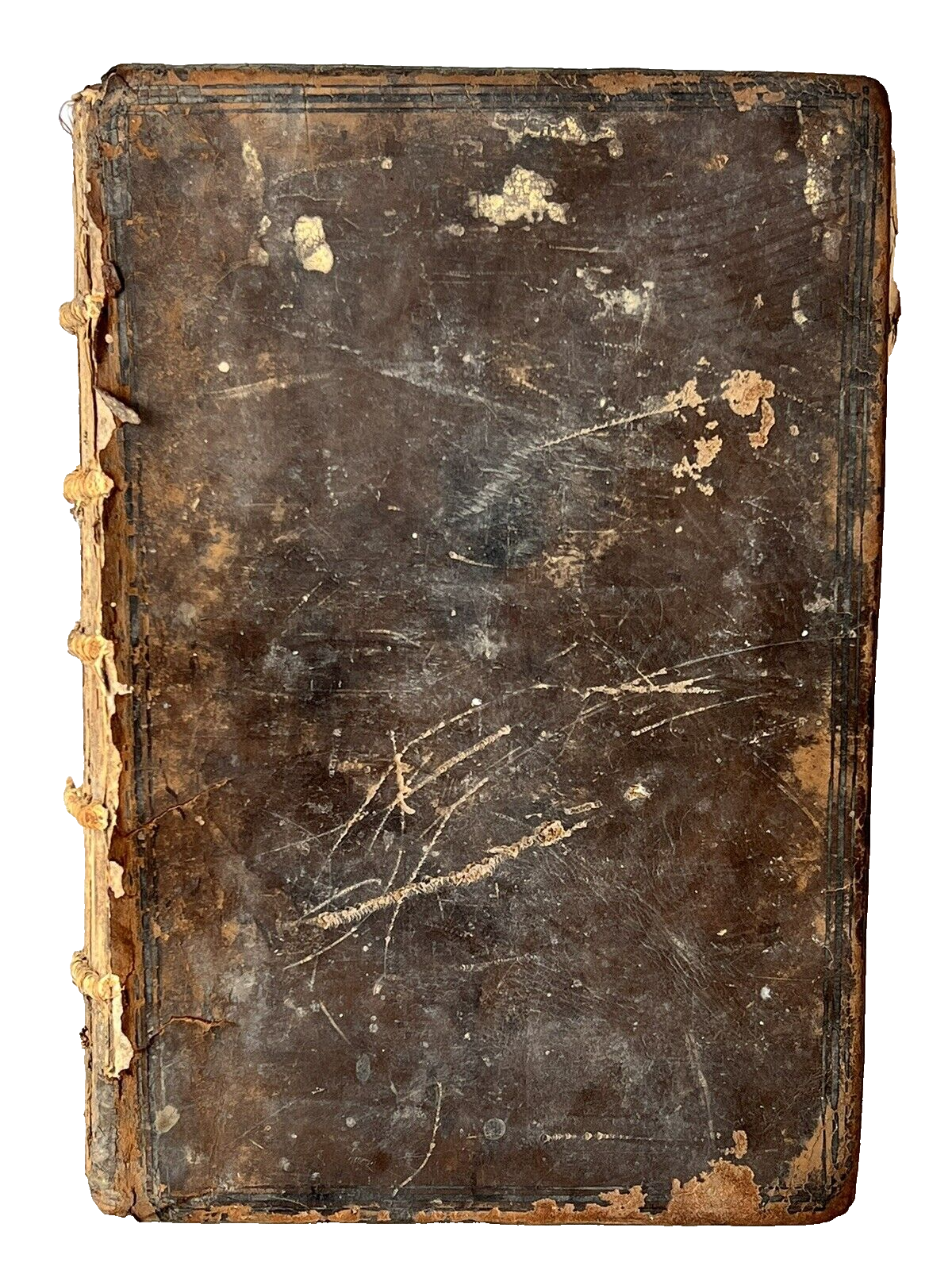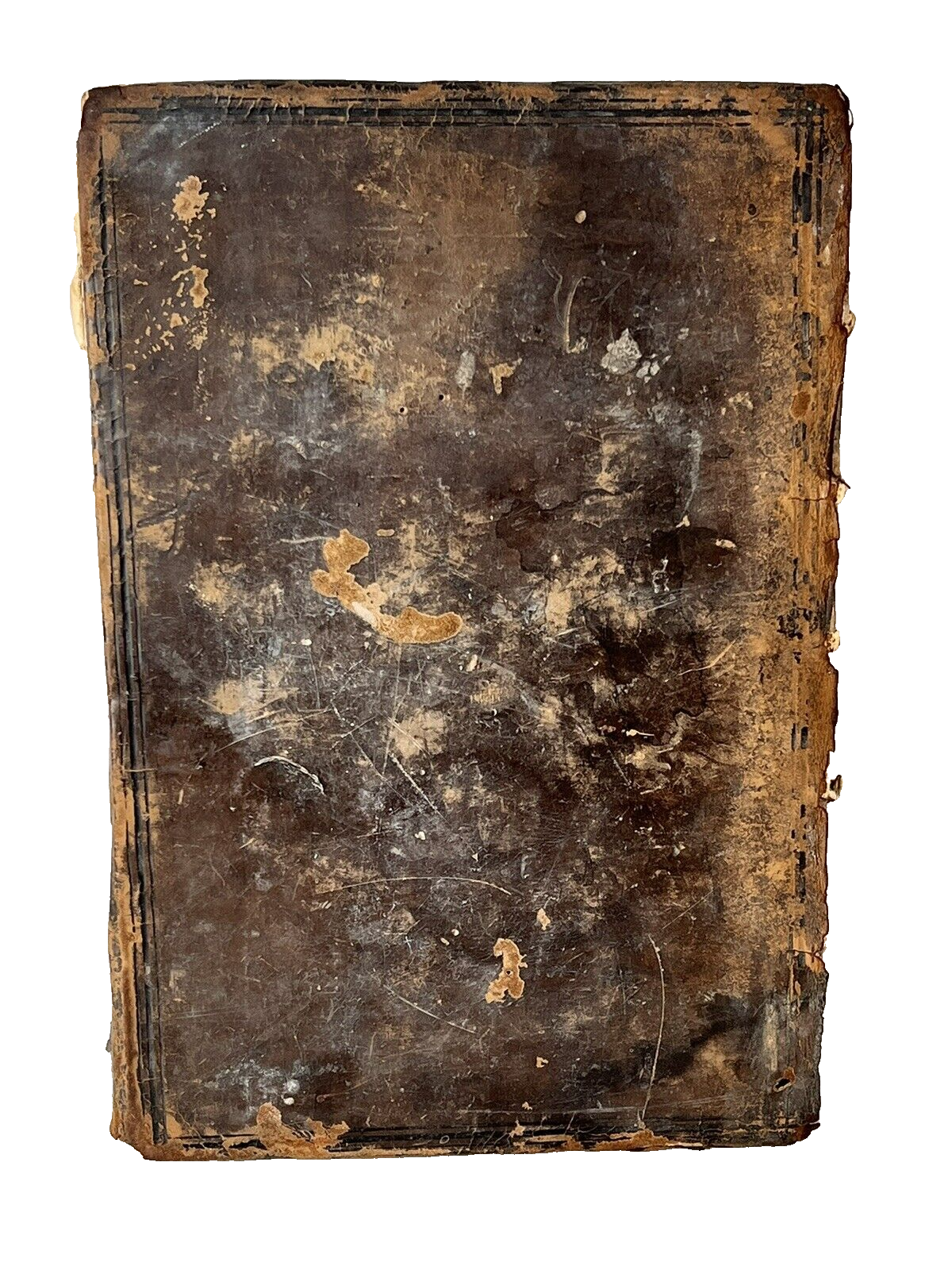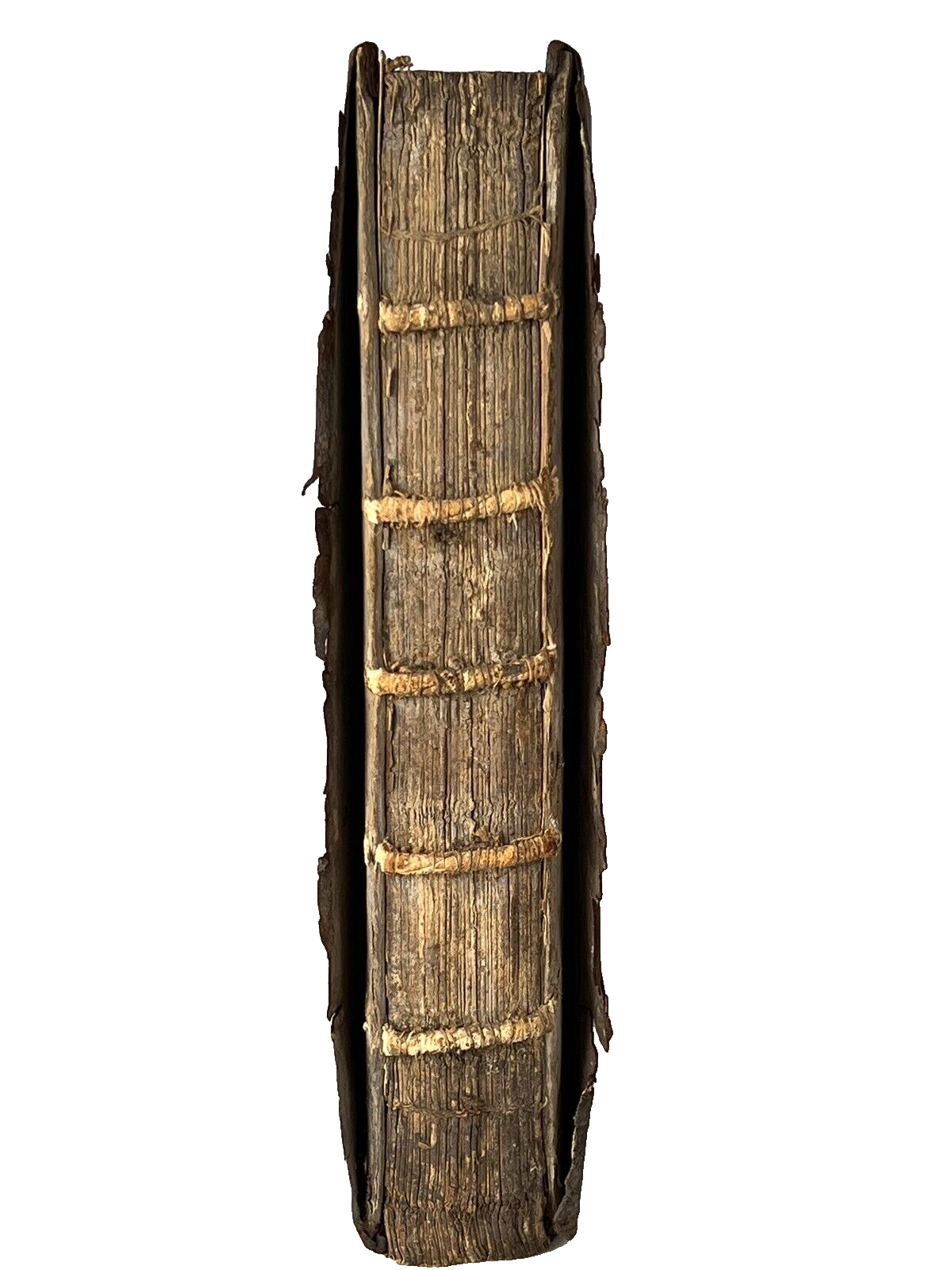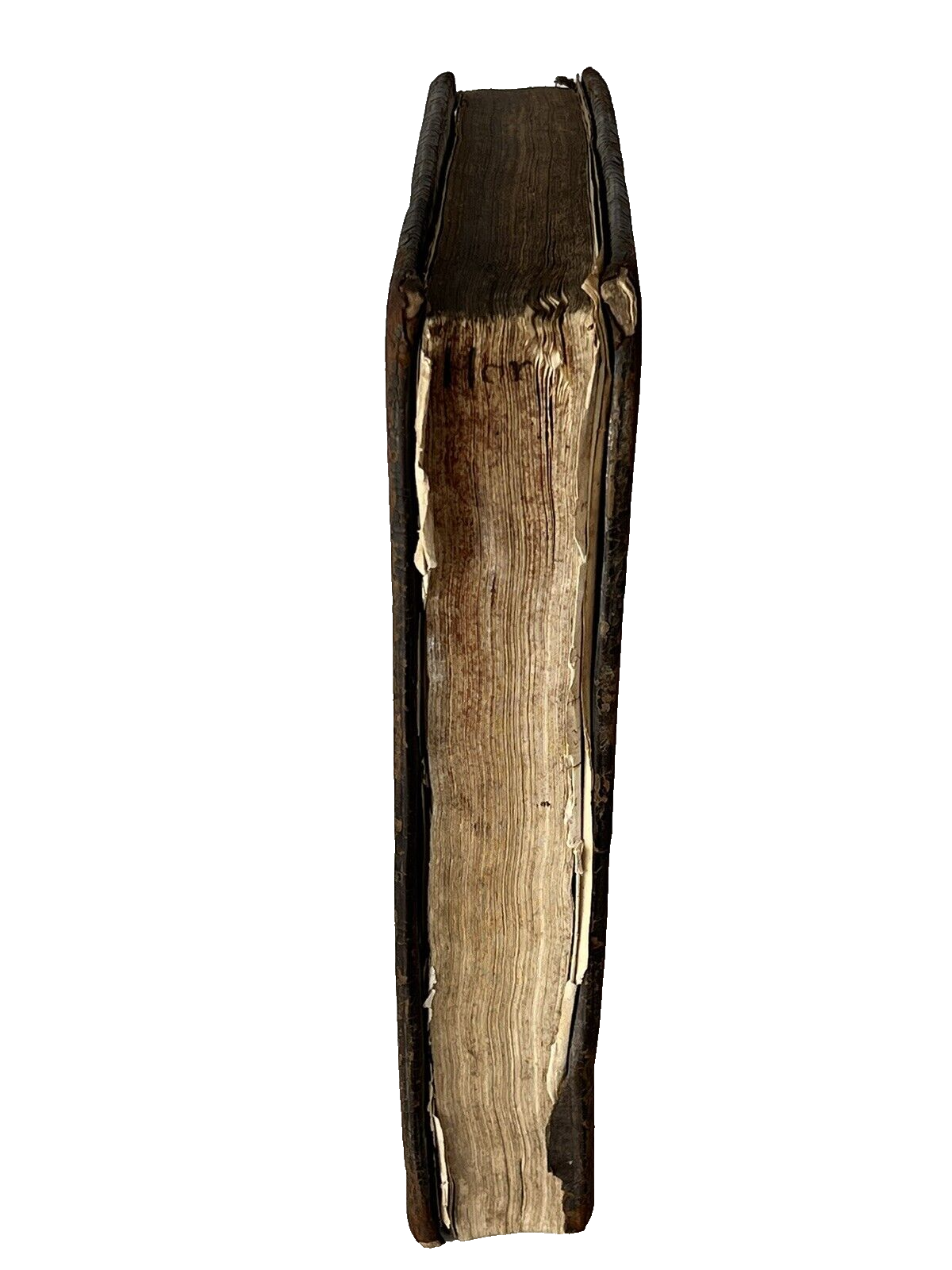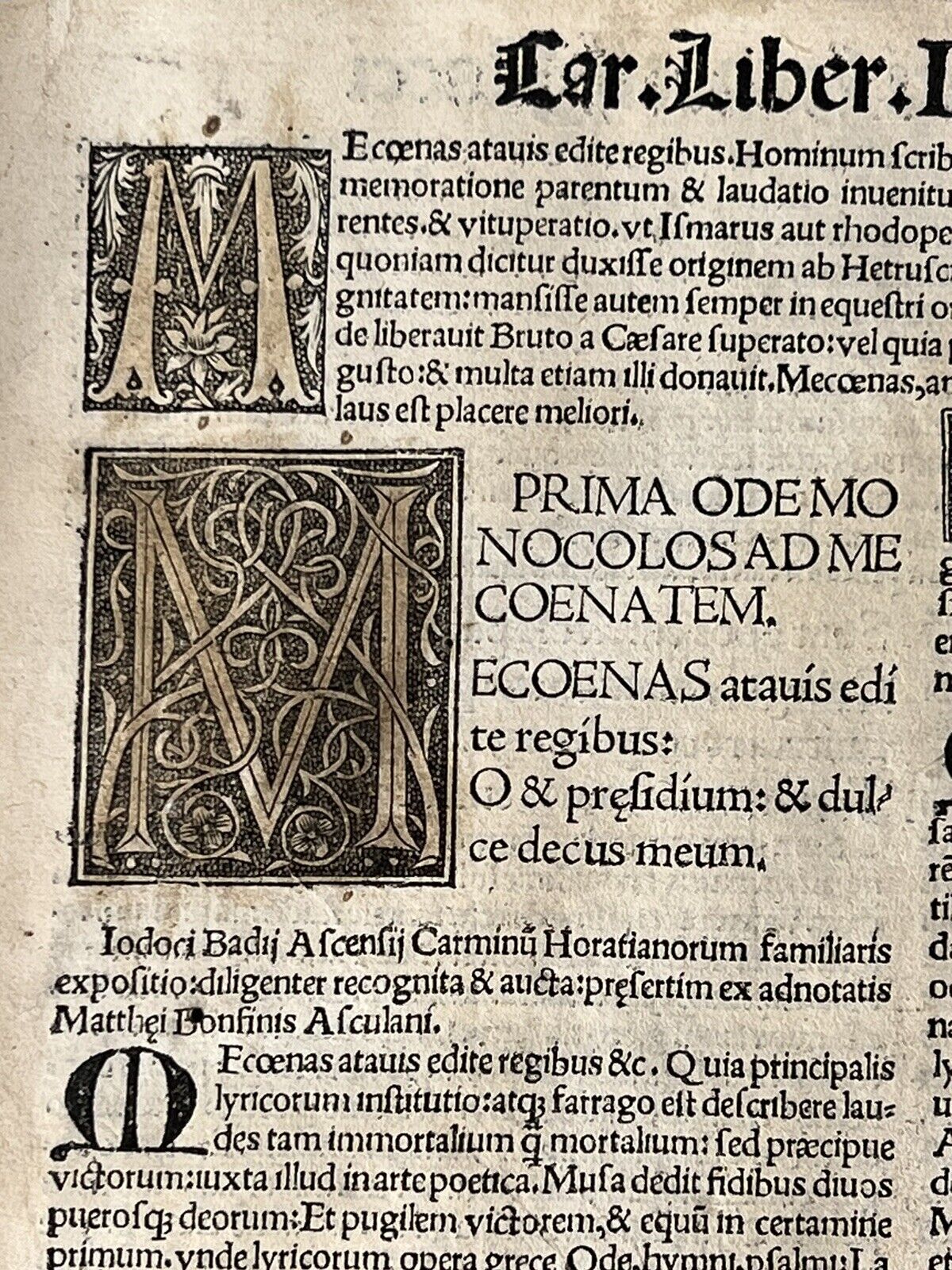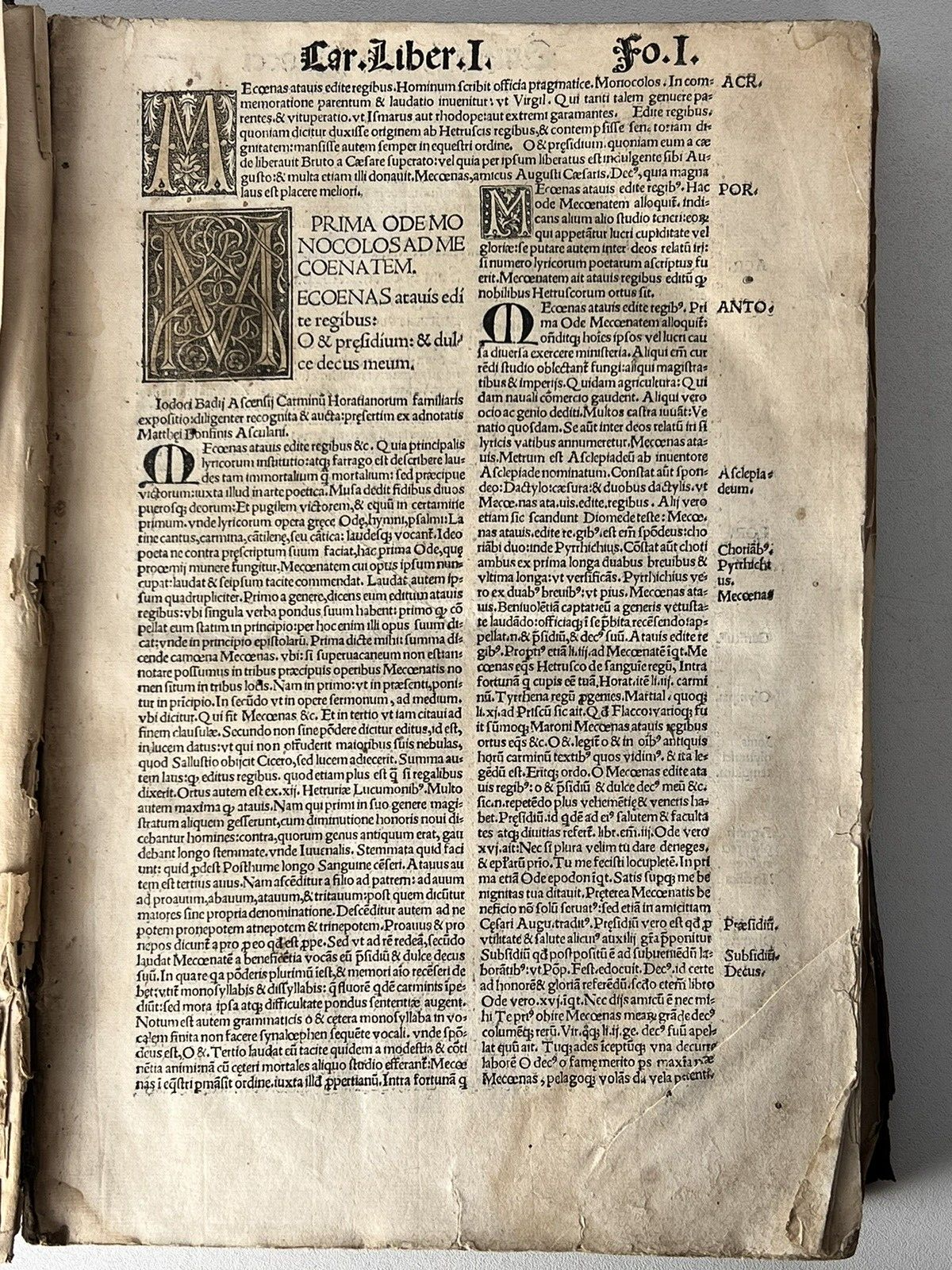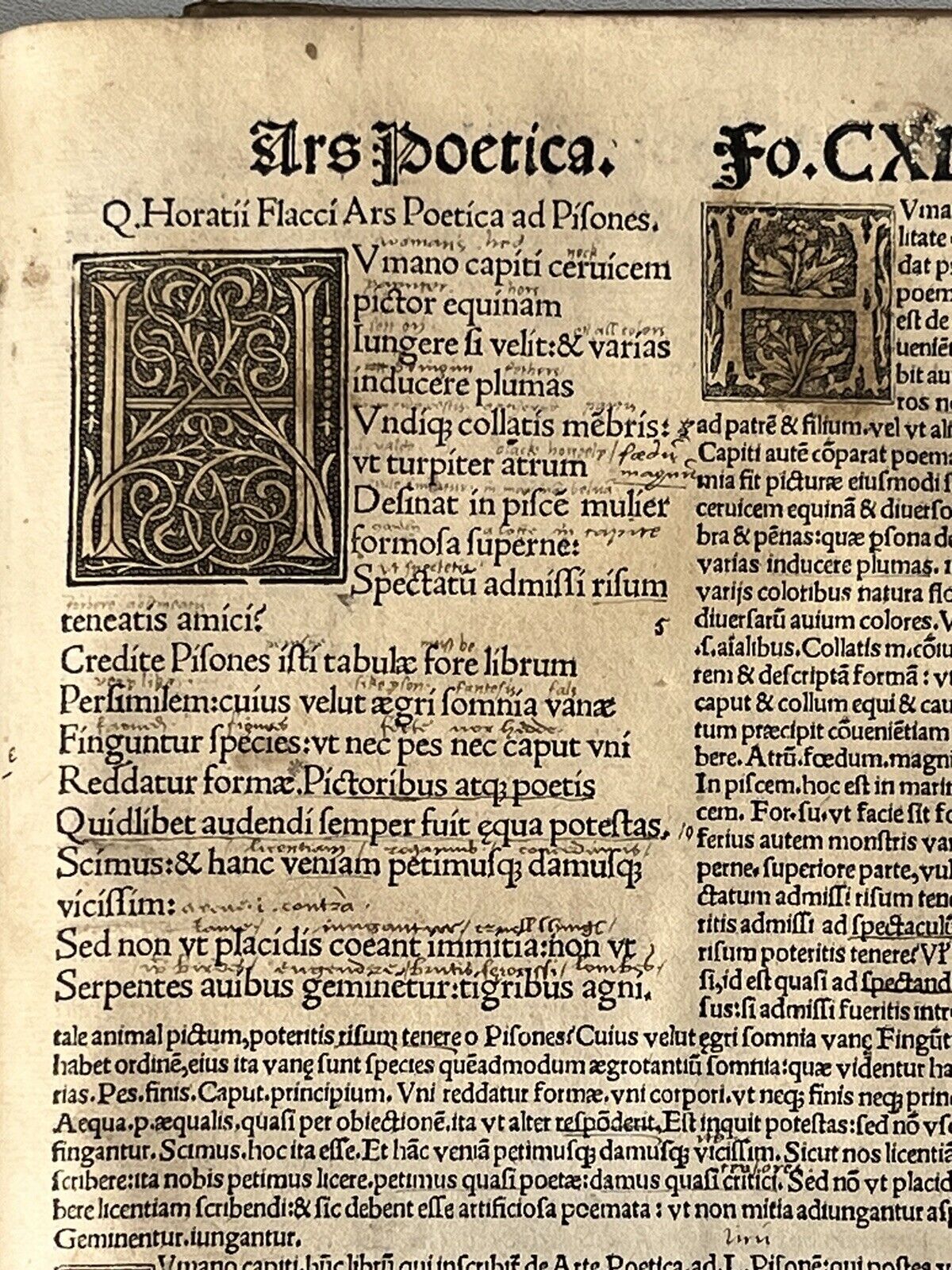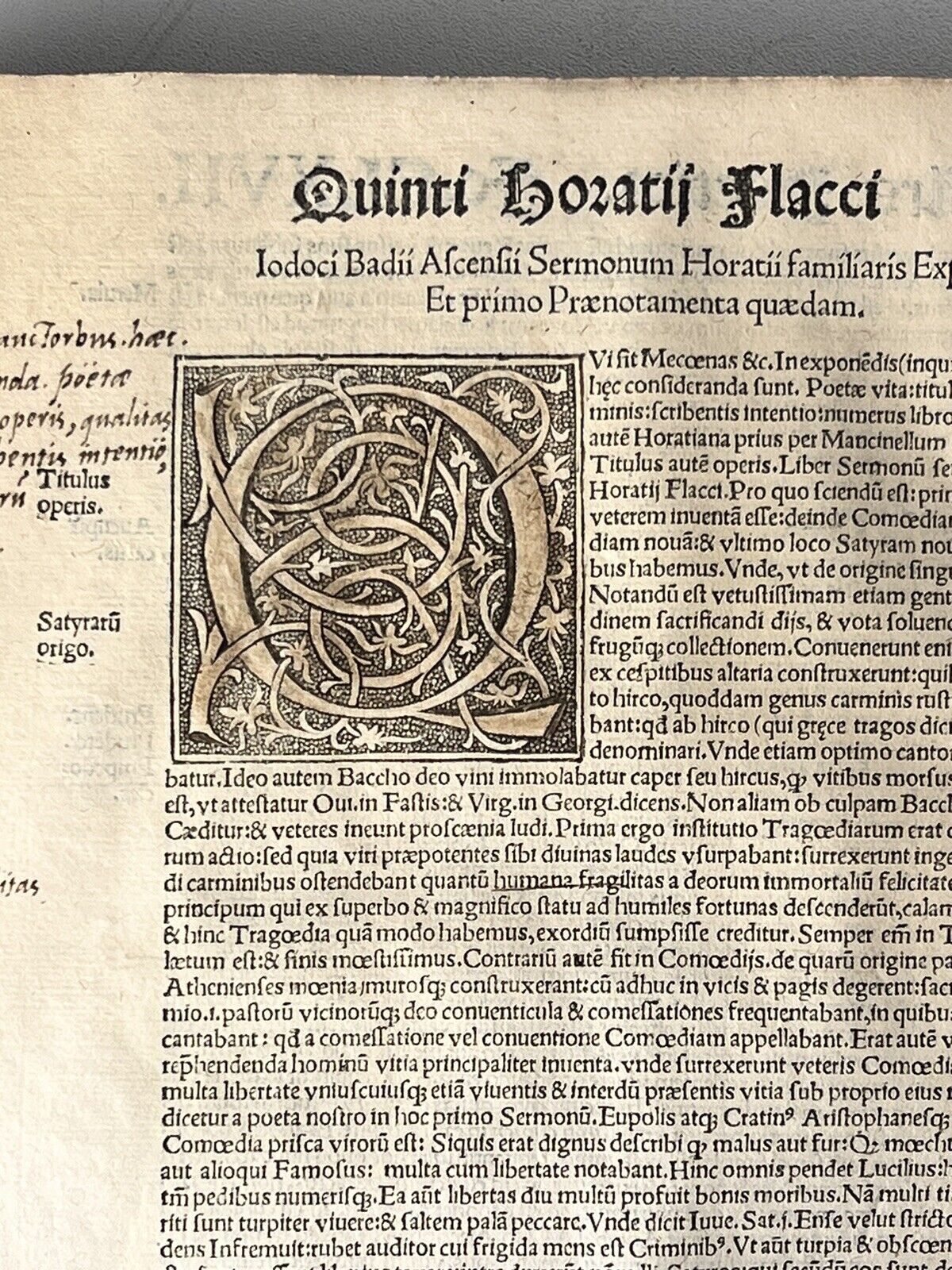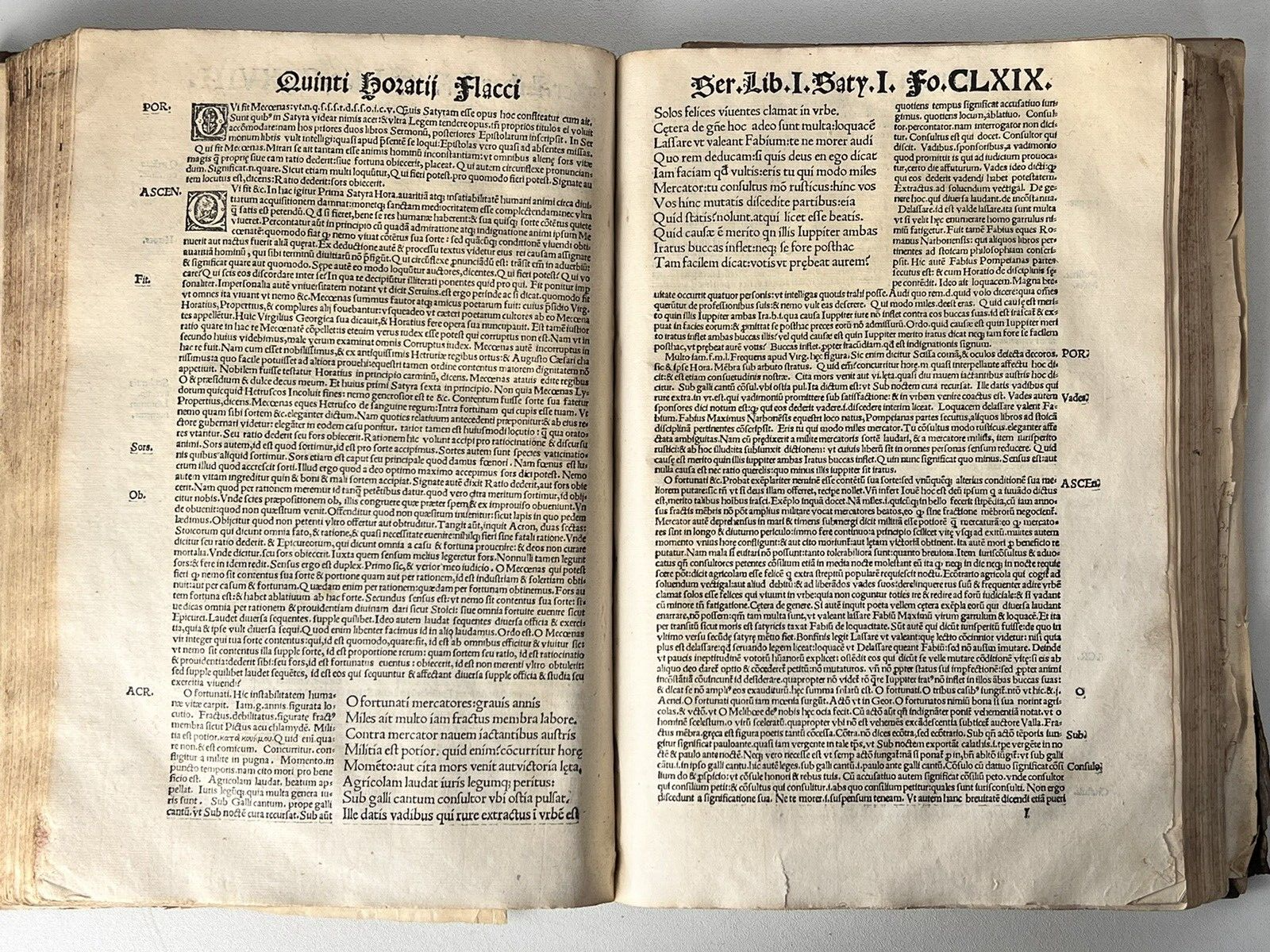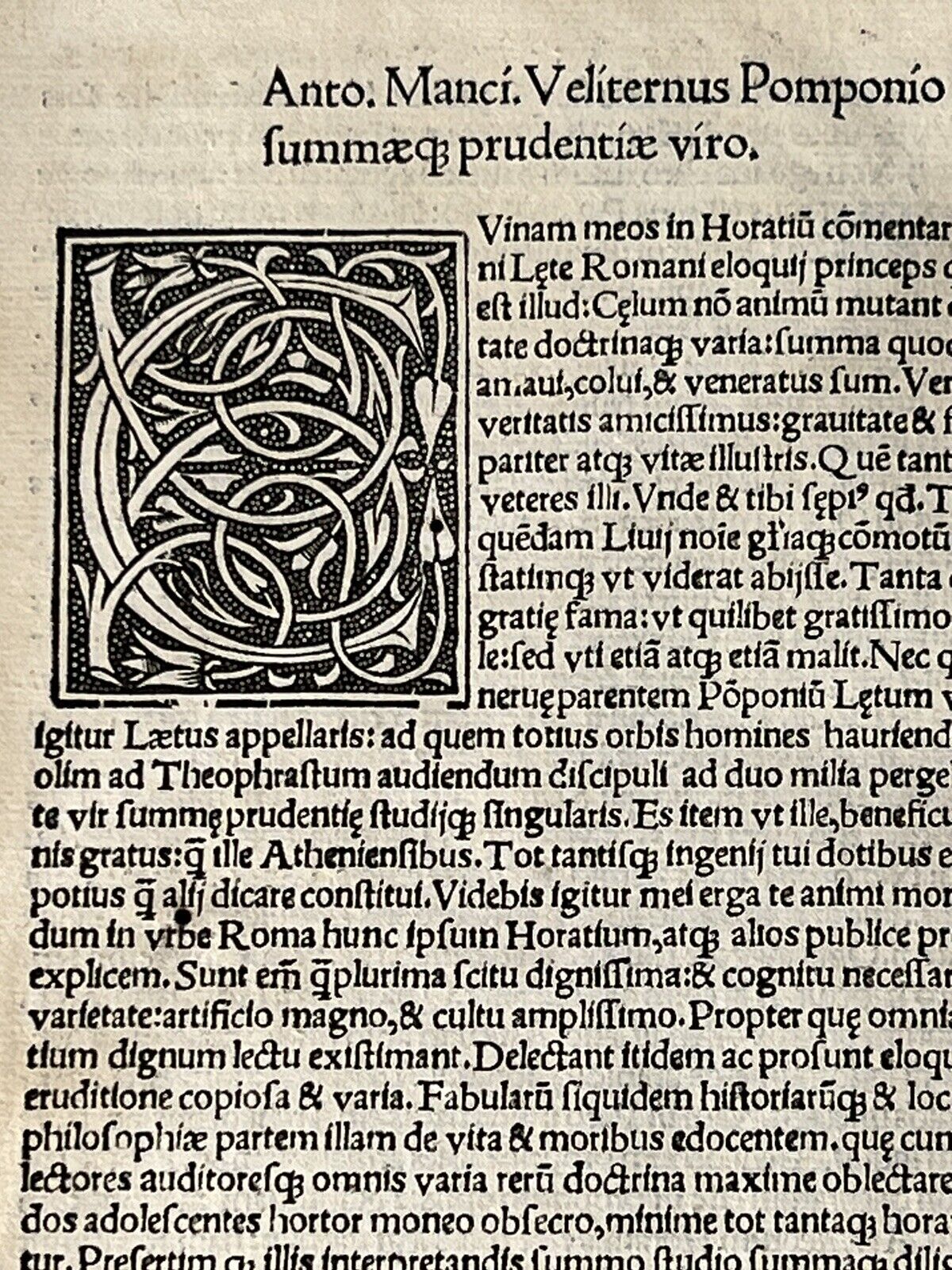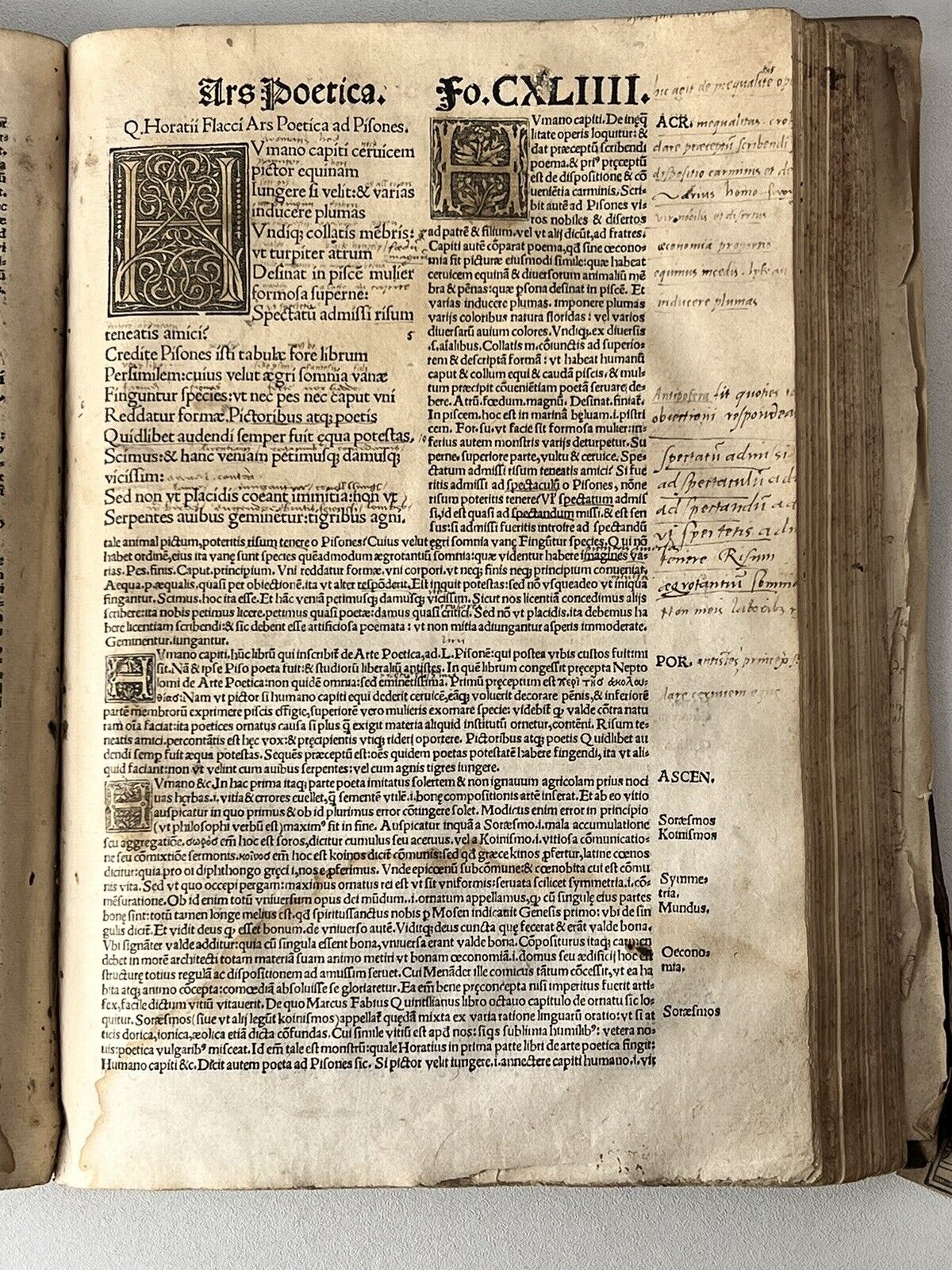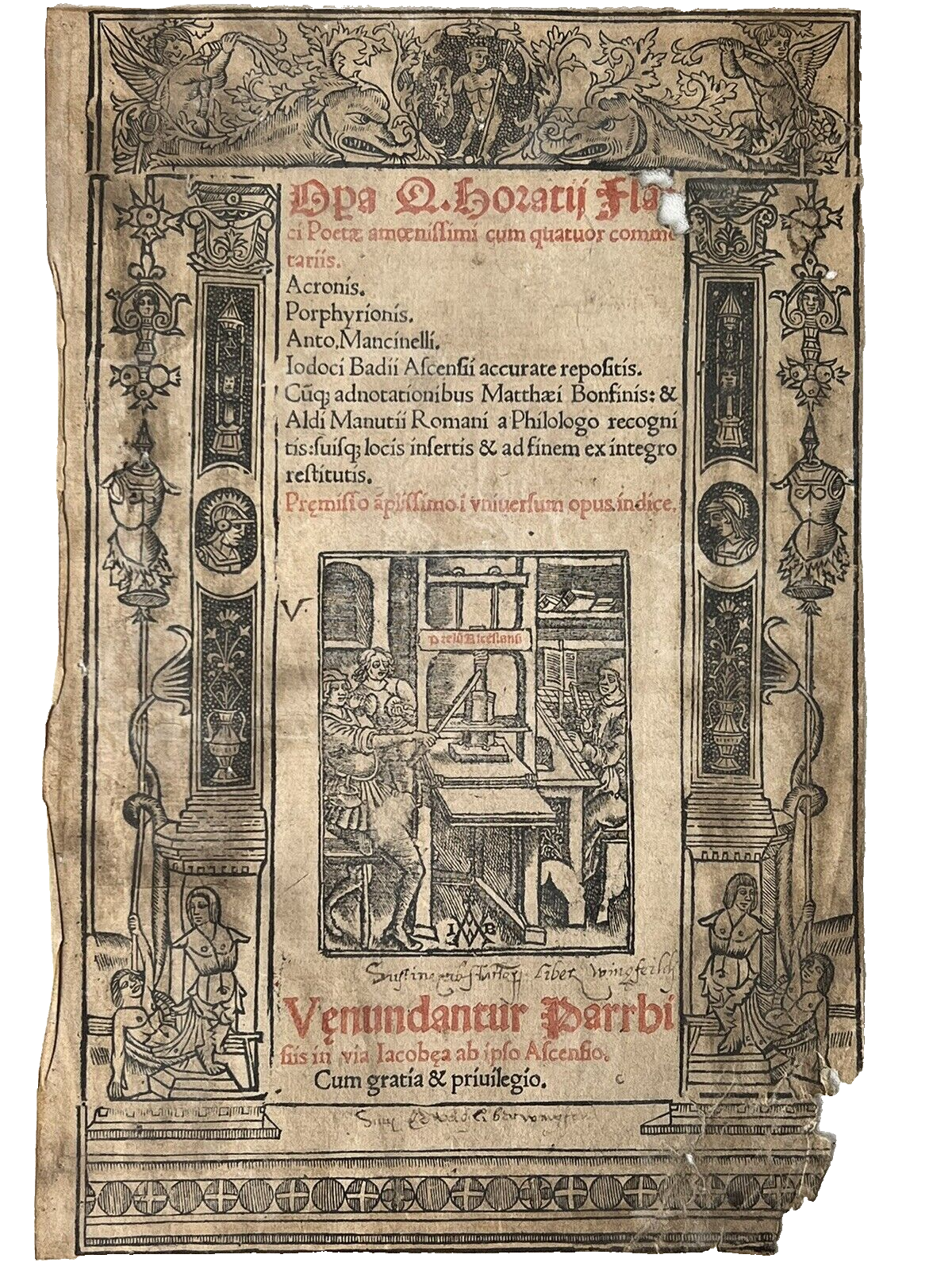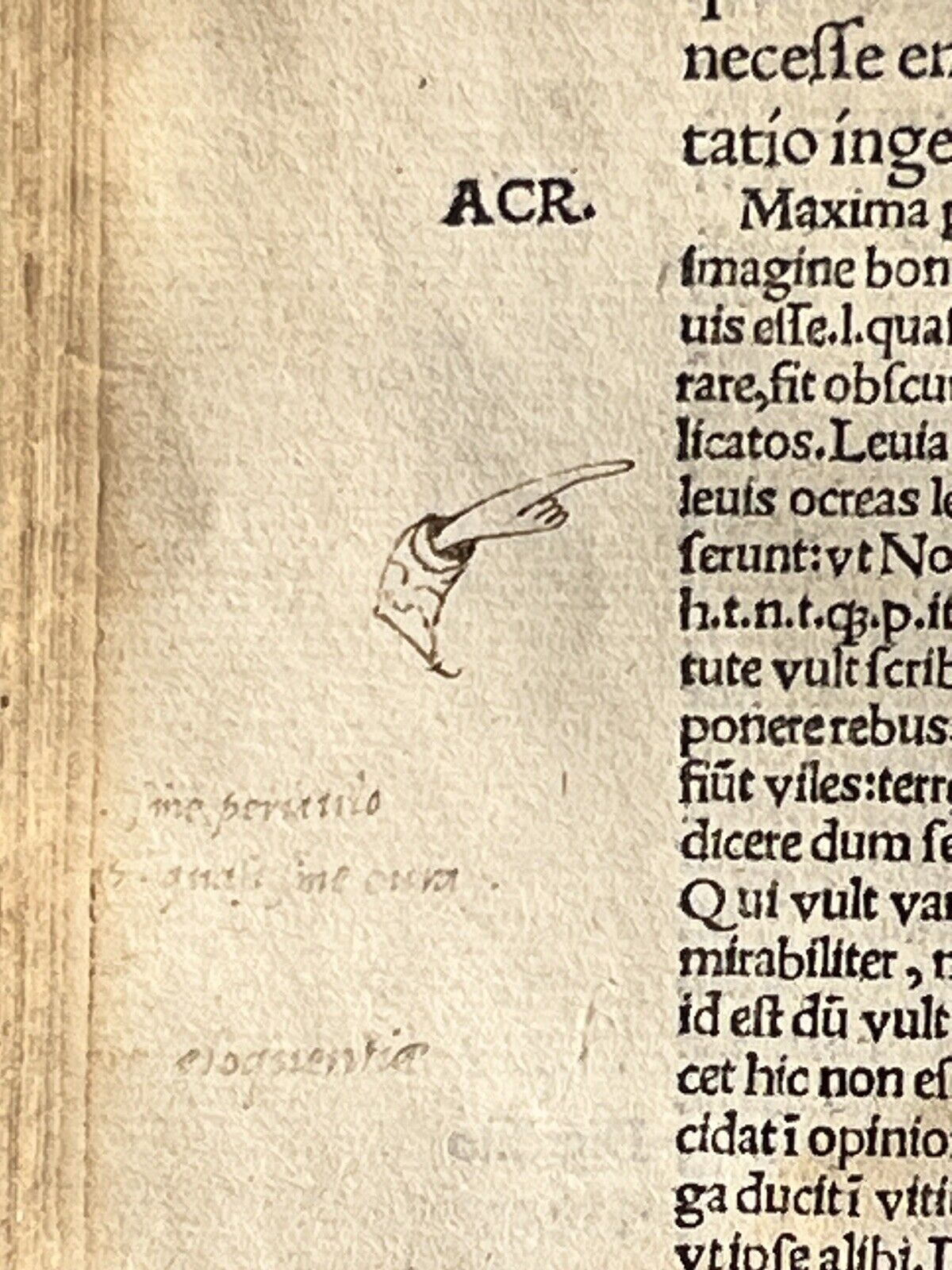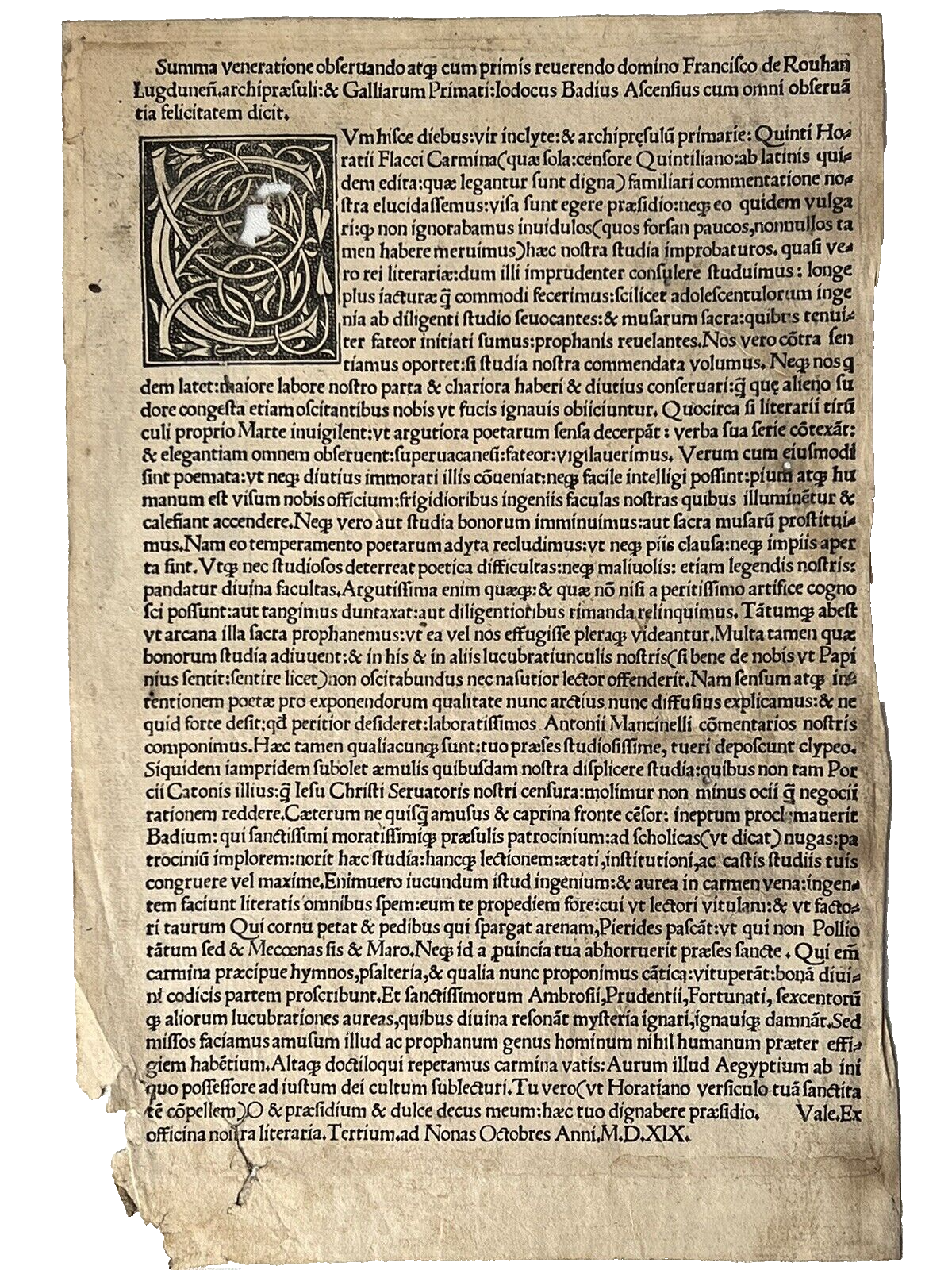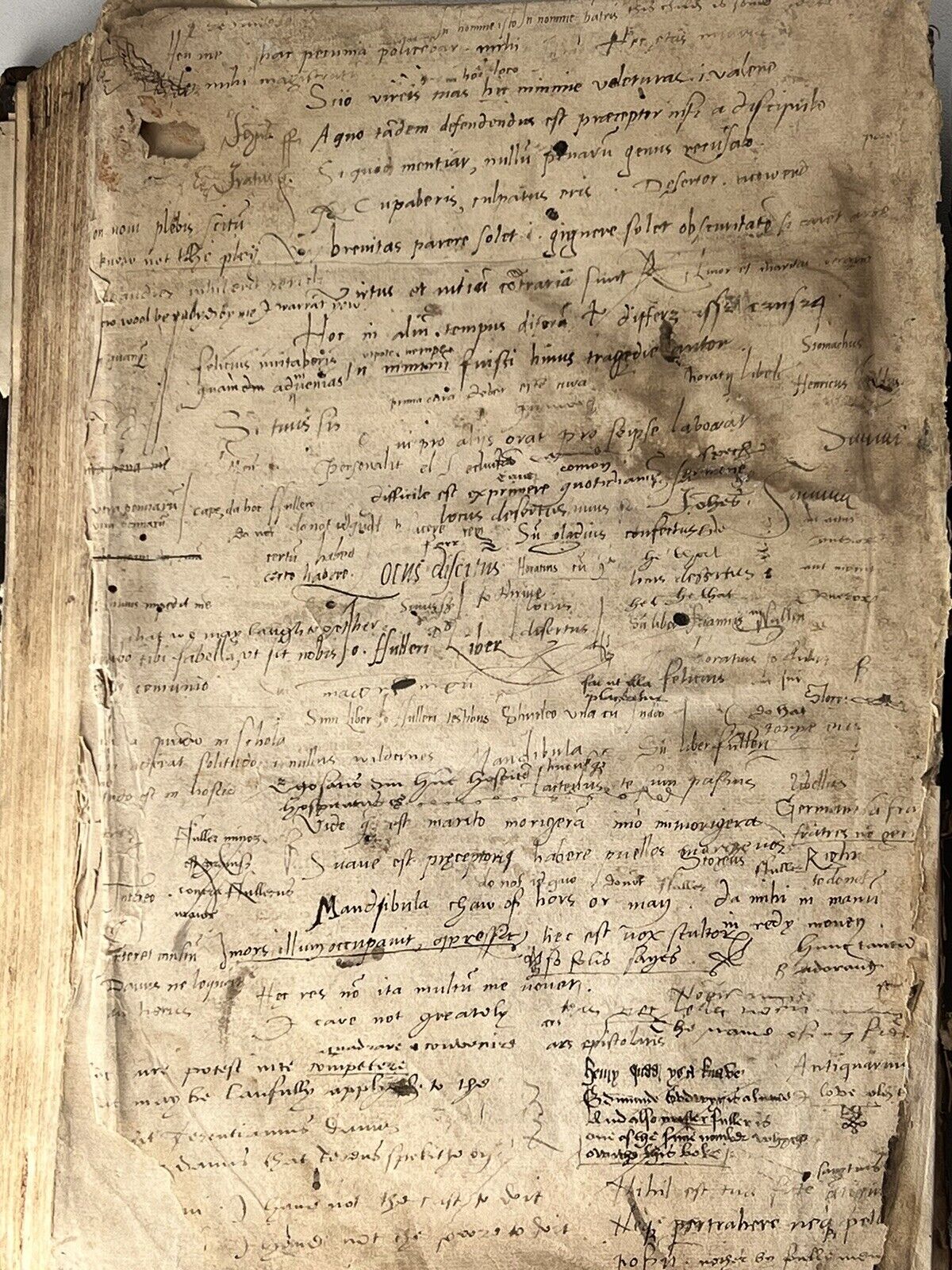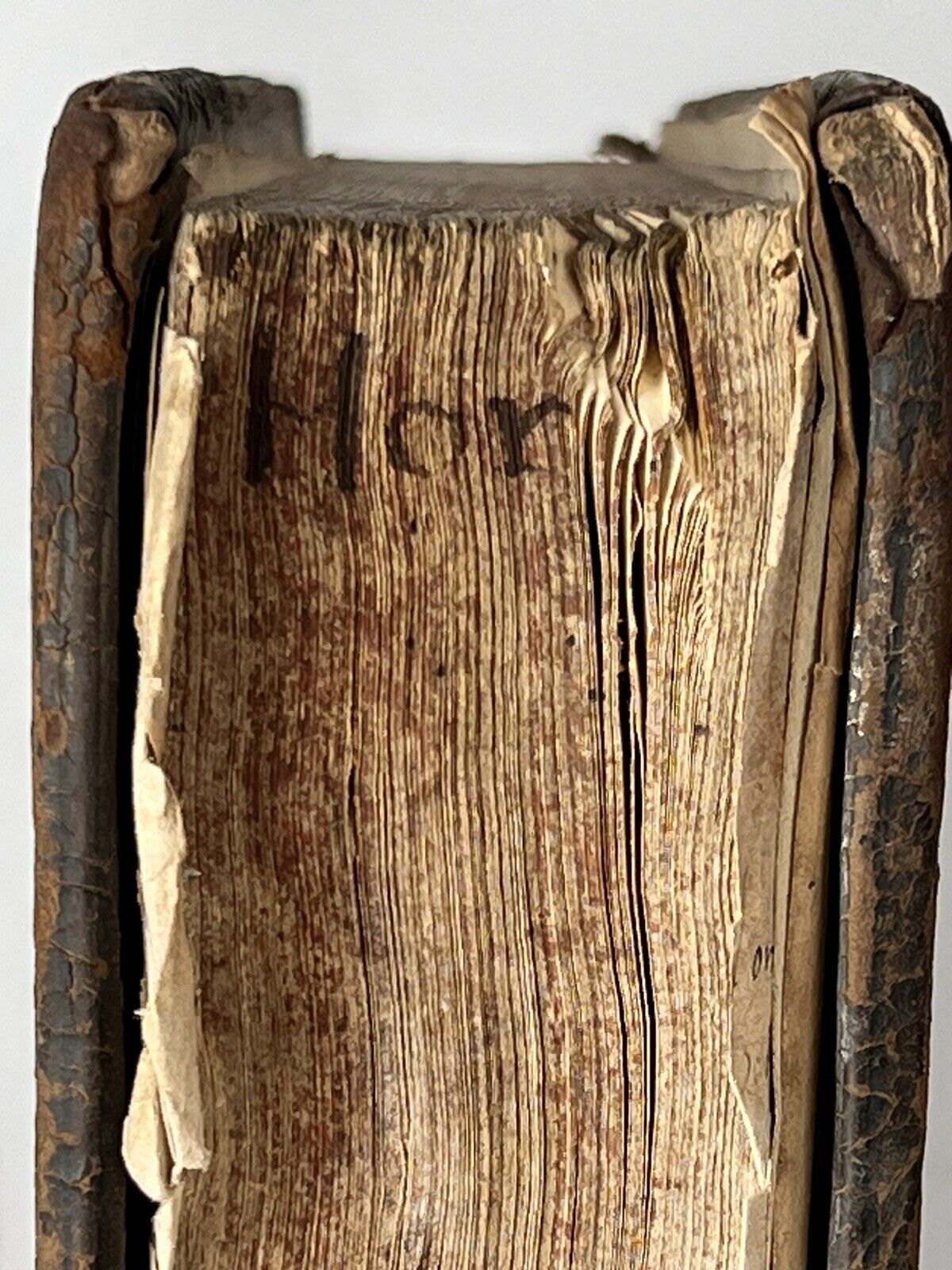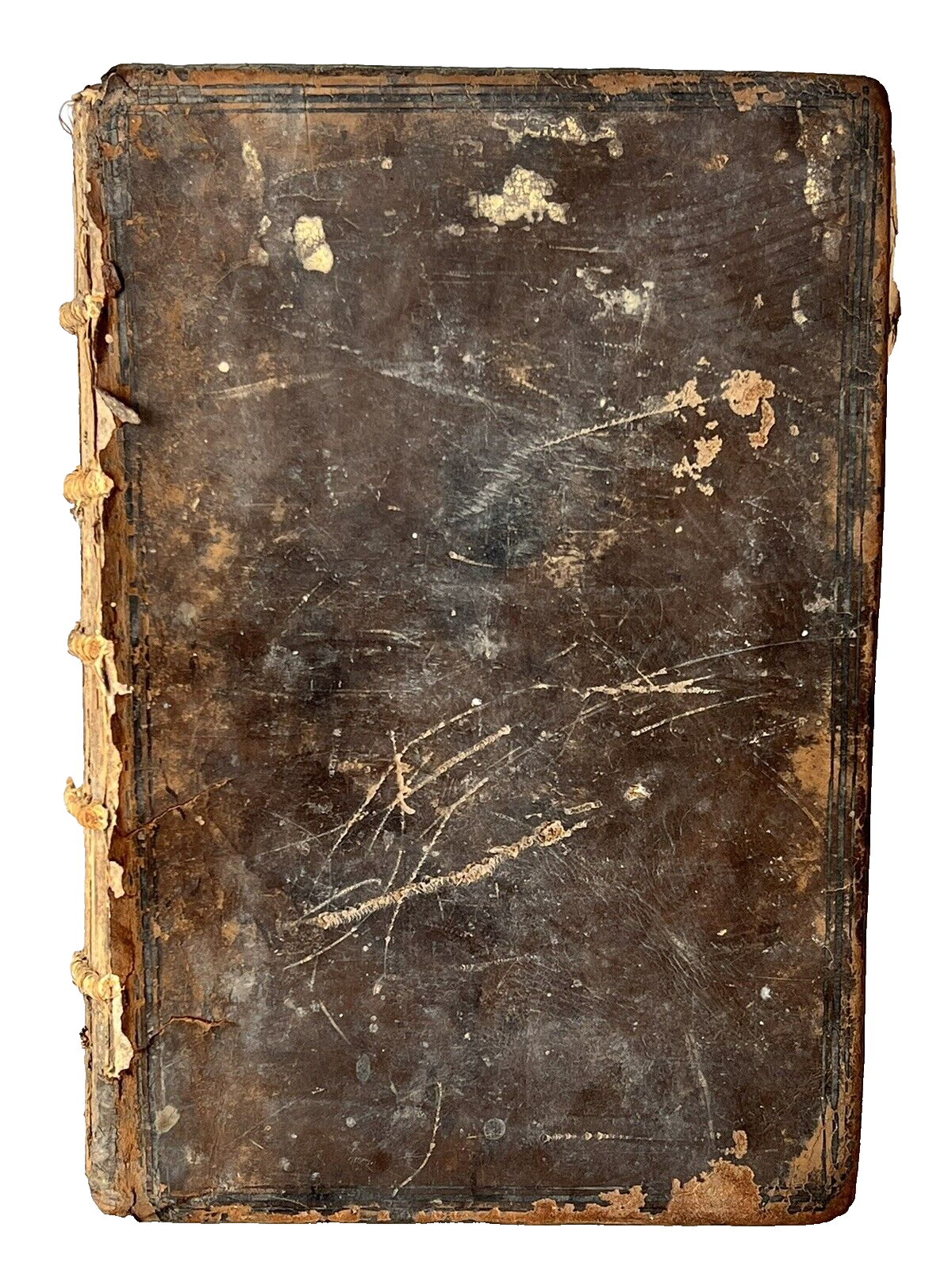1519 Horace Post-Incunable with Contemporary Marginalia
1519 Horace Post-Incunable with Contemporary Marginalia
Couldn't load pickup availability
"A SPLENDID AND UNCOMMON EDITION" - Dibdin
Opa Q. Horatii Flacci Poetae amoenissimi cum quatuor commetariis. Acronis. Porphyrionis. Anto Mancinelli. Iodoci Badii Ascensii accurate repostis. Cuq adnotationibus Matthaei Bonsinis: et Aldi Manutii Romani a Philogo recognitis: suisq locis insertis et ad finem ex integro restitutis. Premisso aplissimo i universum opus indice. Venundantur Paribisis in via Iscobea ab ipso Ascensio. Cum gratia et privilegio, 1519. [Colophon]: Annotationi Aldi in Horatiu quas et a Philologo quodam Florentino impressas offendimus. Anno MDXIX ut supra, fo.
A STUNNING EARLY PRINTED POST INCUNABLE COPY IN FOLIO SIZE OF THE WORKS OF HORACE WITH BEAUTIFUL TYPOGRAPHY AND VERY EARLY MARGINALIA IN TWO DISTINCT HUMANIST HANDS.
-------------------
FIRST EDITION THUS; the best of Badius' editions of Horace. This highly desirable edition served as the basis for the majority of subsequent early editions of Horace. This is beautifully printed in folio format with classic incunable style typography with the text of Horace surrounded with Badius' commentary along with commentary from the important humanist Antonio Mancinelli and classical ancient commentary as listed on the engraved title page. Interestingly we also find that Aldus Manutius is one of the commentators for this edition who is probably the most famous printer of this early post incunable period. Text in Latin with some passages in Greek, edited by Jodocus Badius (i.e. Josse Bade)
Jodocus Badius (1462 - 1535) was a celebrated French humanist philologist and publisher, often referred to as Badius Ascensius after his birthplace. Before relocating to Paris, where he swiftly gained prominence as a distinguished printer in his own right, Badius served as an editor and proof-reader for Johann Trechsel in Lyon from 1492 to 1498. During this time, he also taught Greek. Bade's publishing house earned a formidable reputation among the leading humanists of the era, many of whom he had personal connections with. He corresponded with luminaries such as Erasmus and Budé, and his Parisian residence served as a hub for intellectuals and writers. Over a span of thirty years, his press produced more than 750 editions, predominantly catering to humanist interests. Bade was renowned for the accuracy of his classical texts, with the additional distinction of personally editing and/or providing commentaries for most of them, as with this important 1519 edition of Horace. Four of Bade's daughters married printers, one of whom, Robert Estienne, assumed control of Bade's press upon his demise.
Horace (Quintus Horatius Flaccus) is a highly influential Roman poet active during the reign of Emperor Augustus and thus through the time period of the New Testament. He was the most celebrated poet of this time period (alongside Virgil). He had the temerity to refuse Augustus' offer of a position as his personal secretary, although he does not seem to have lost any favour with the Emperor for it which only goes to emphasise his importance and appreciation during the classical time. His works have greatly influenced Western literature including William Shakespeare, John Milton, Alexander Pope, Samuel Johnson, Robert Frost, T.S. Eliot, and W.H. Auden.
-------------------
The binding of this edition is notable as it is almost certainly English, and thus one of the very earliest examples of bookbinding in England as it is certainly a 16th century binding, thus generally preceding the conception of tooled bindings in England. The printer's device on the woodcut title page is also of note, being one of the earliest depictions of a printing press in use.
-------------------
Size: 220 x 316 mm (approx.)
Condition:
[aa6, a-z8, A-N8]
Woodcut title page in red and black with a beautiful printer's device within an architectural border showing a printing press in use. Woodcut title page defective with the blank border trimmed away, disbound but present, without loss to text on verso but slightly touching some of the border on the recto. Blank bifolium disbound at beginning but present, the same at the rear. Gathering aa (index) disbound and defective with some losses at leaf edges but generally without significant text loss. N8 disbound but present with some small holes and chips at edges. Dampstaining throughout but with all text legible. Some minor wormholing occasionally catching a letter or two of text. Occasional marginalia throughout in two contemporary hands, but the marginalia is abundant throughout the Ars Poetica in a very neat and often small hand, being one of the two humanist hands. Text block occasionally slightly trimmed at edges, sometimes losing parts of the marginalia but never the printed text.
16th century English calf binding, lacking backstrip/spine with the leather of the boards raised at the edges, thus making rebacking very easy if desired. Joints cracked and fragile but with both boards insecurely attached, the rear board attached with 2/5 joints only. Boards heavily rubbed and scuffed but generally incredible for their earliness and being English.
An incredible early printed work with beautiful typography.
[Adams H865].
